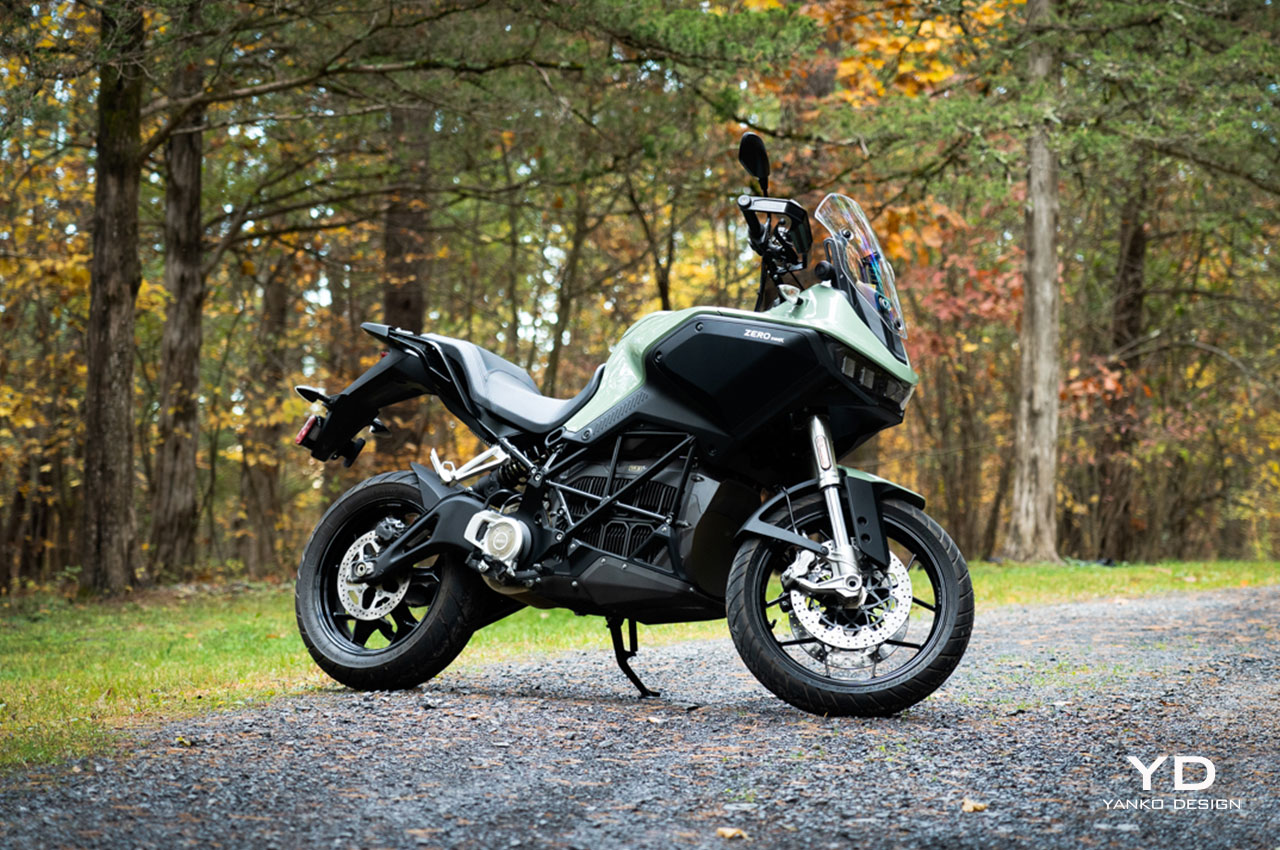
PROS:
- Engaging handling
- Excellent off-road
- Comfortable in any conditions
CONS:
- Range can be a struggle
- Expensive
While the four-wheeled EV industry is robust at this point, nearly every major manufacturer offering a selection of great options with stellar performance and looks, the electric motorcycle market is lagging behind.
And that’s despite getting something of a head start. Zero Motorcycles launched its first bike back in 2009, three years before Tesla brought the Model S to bear and really split the automotive EV market wide open. Since then, things have been slow to develop on two wheels.
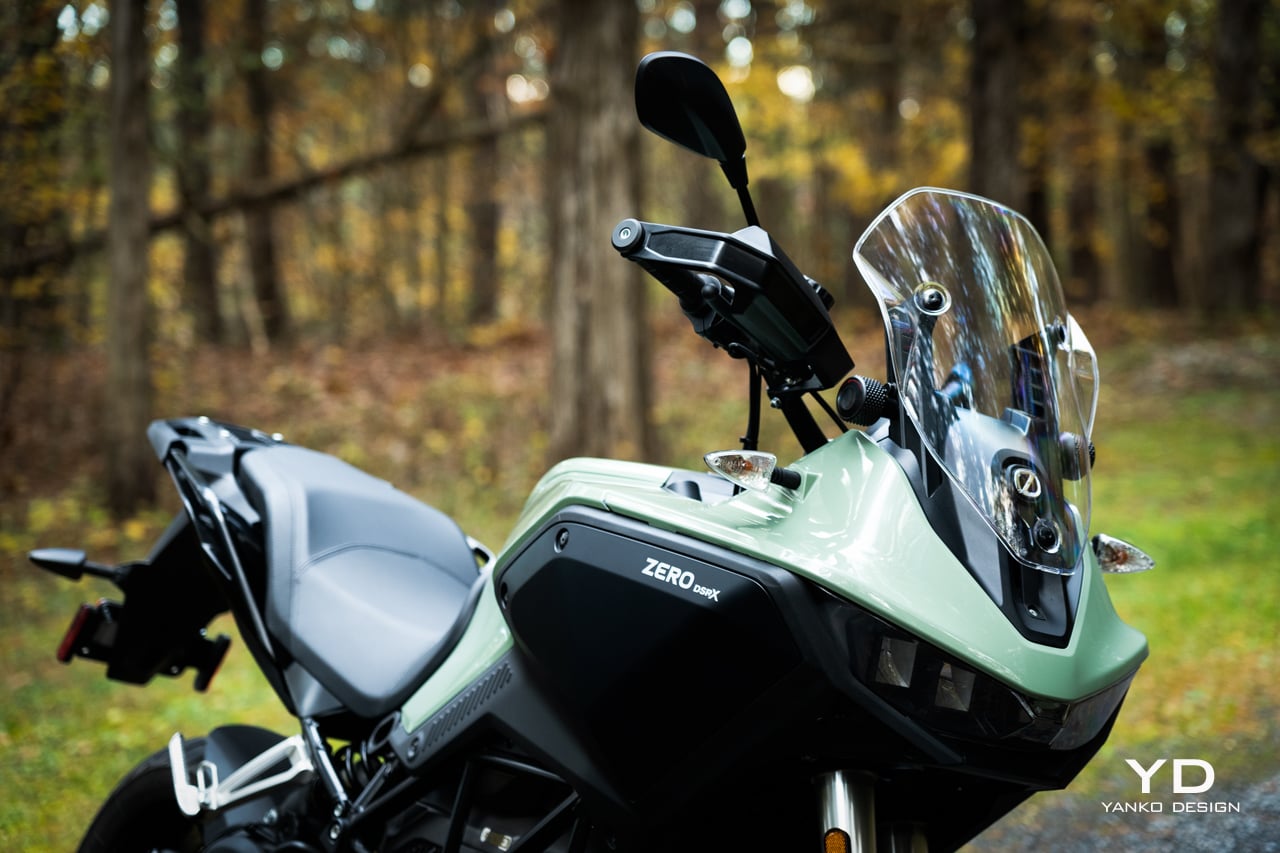
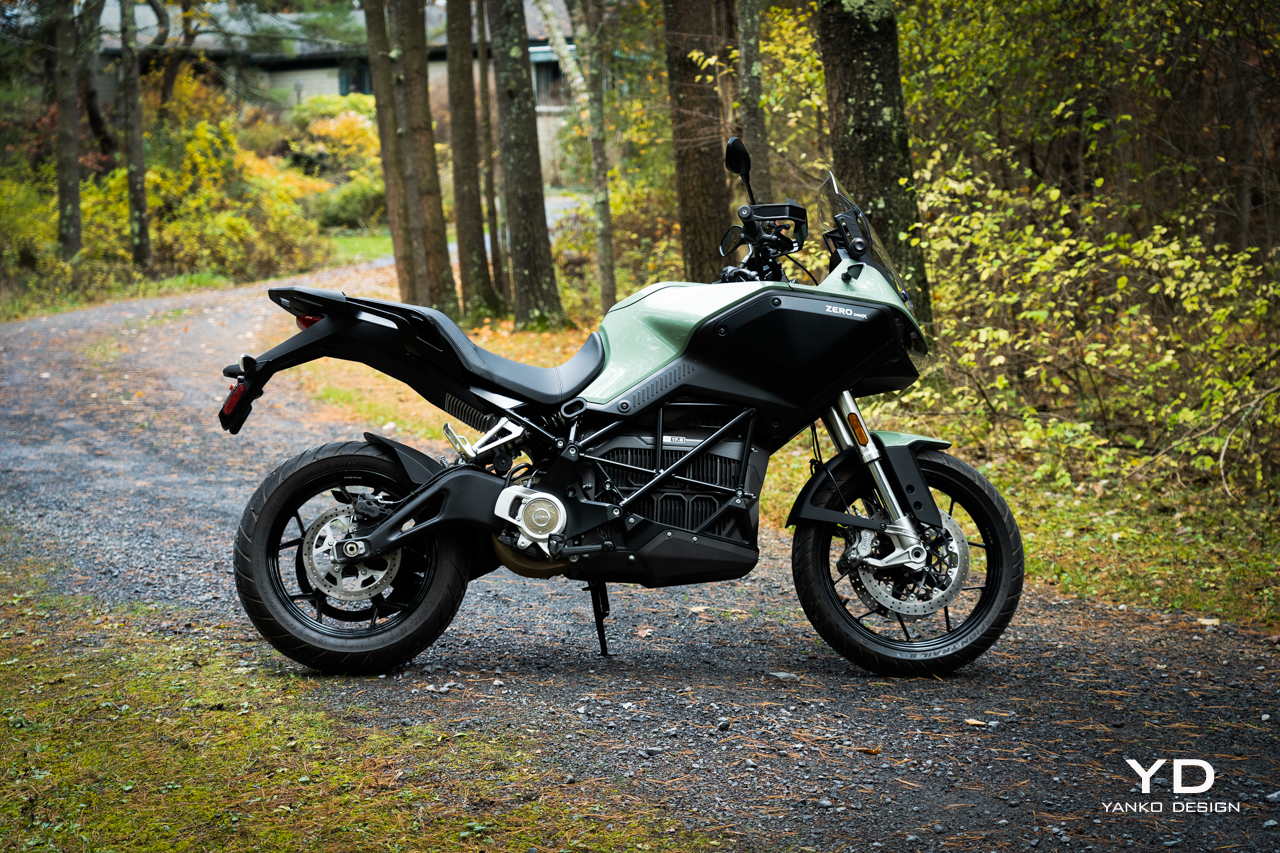
That’s finally changing. Zero’s total sales topped 20,000 last year, volume enough to enable launching more bikes for more types of riding. Their latest is the DSR/X, a dual-sport motorcycle meant for adventure, but can it deliver the kind of silent ease that we’ve come to expect from electric cars?
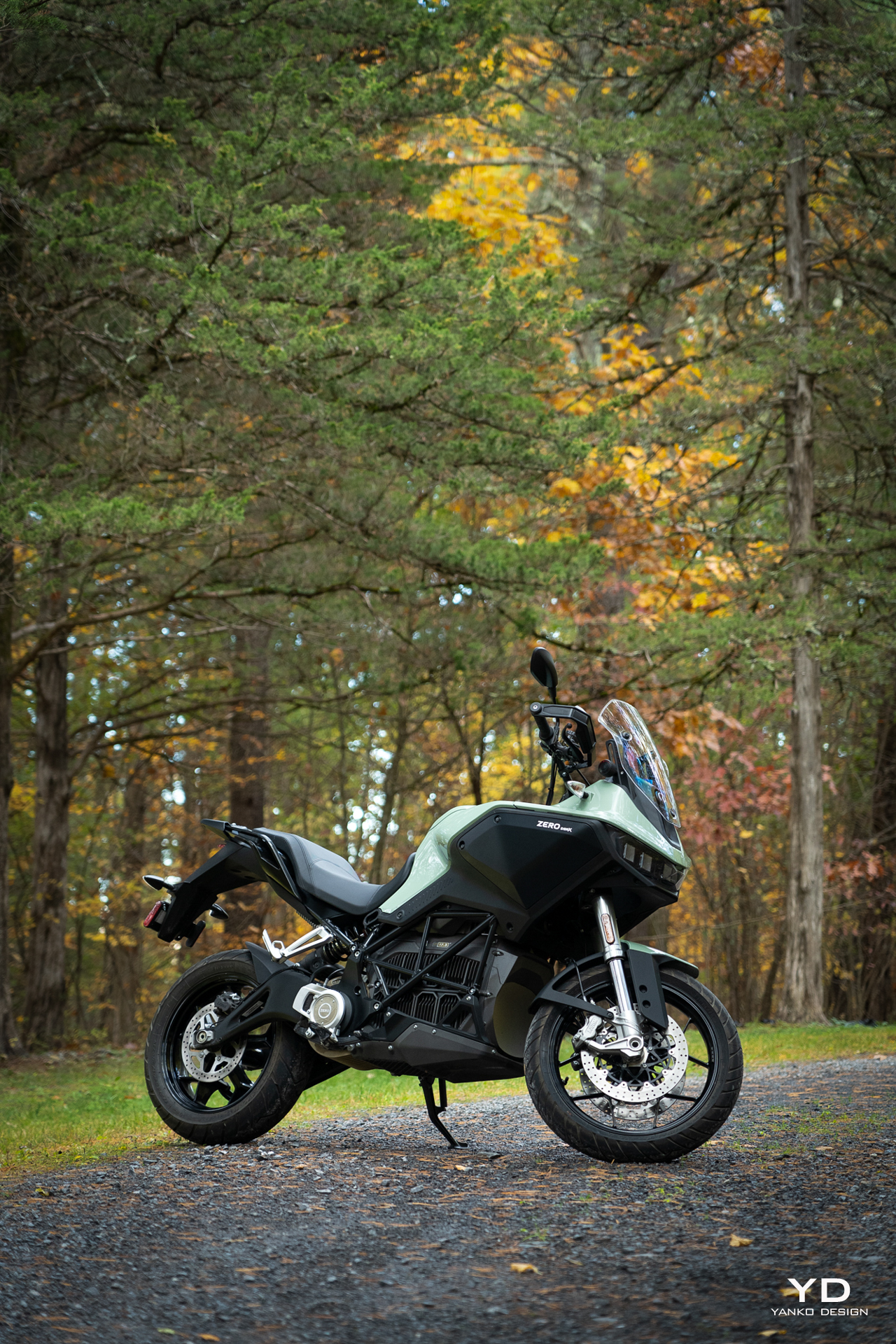
Design
The DS in DSR/X stands for Dual Sport, a category of bike meant to do anything and go anywhere. Think of this as the SUV of motorcycles, a tall profile meant to facilitate better off-road performance, but with a stance and ride characteristics perfectly suited for long stretches of asphalt, too.
Seen head-on, the DSR/X has an almost insectoid look for it, four rectangular headlights arranged such that the outer two are slightly higher than the inners. They’re like eyes on a spider, only squared.
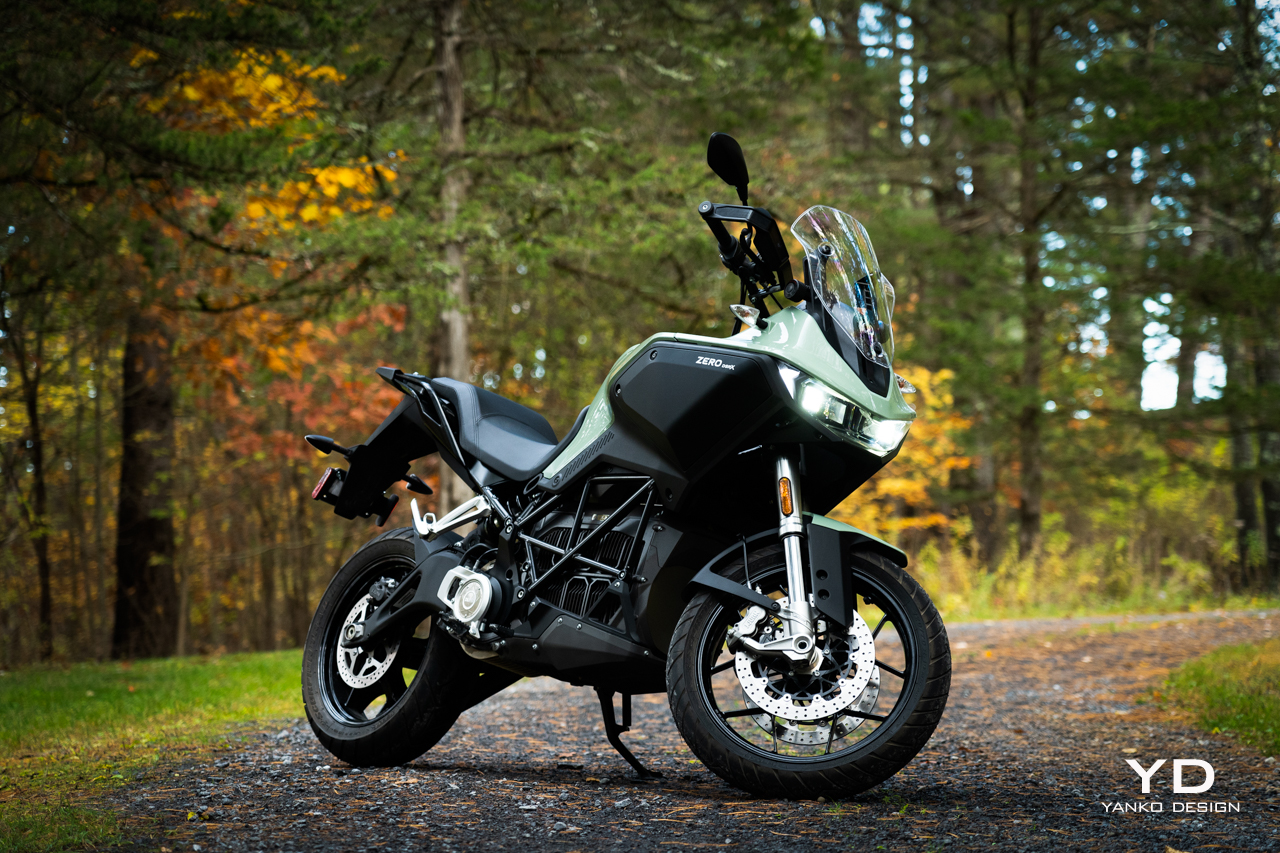
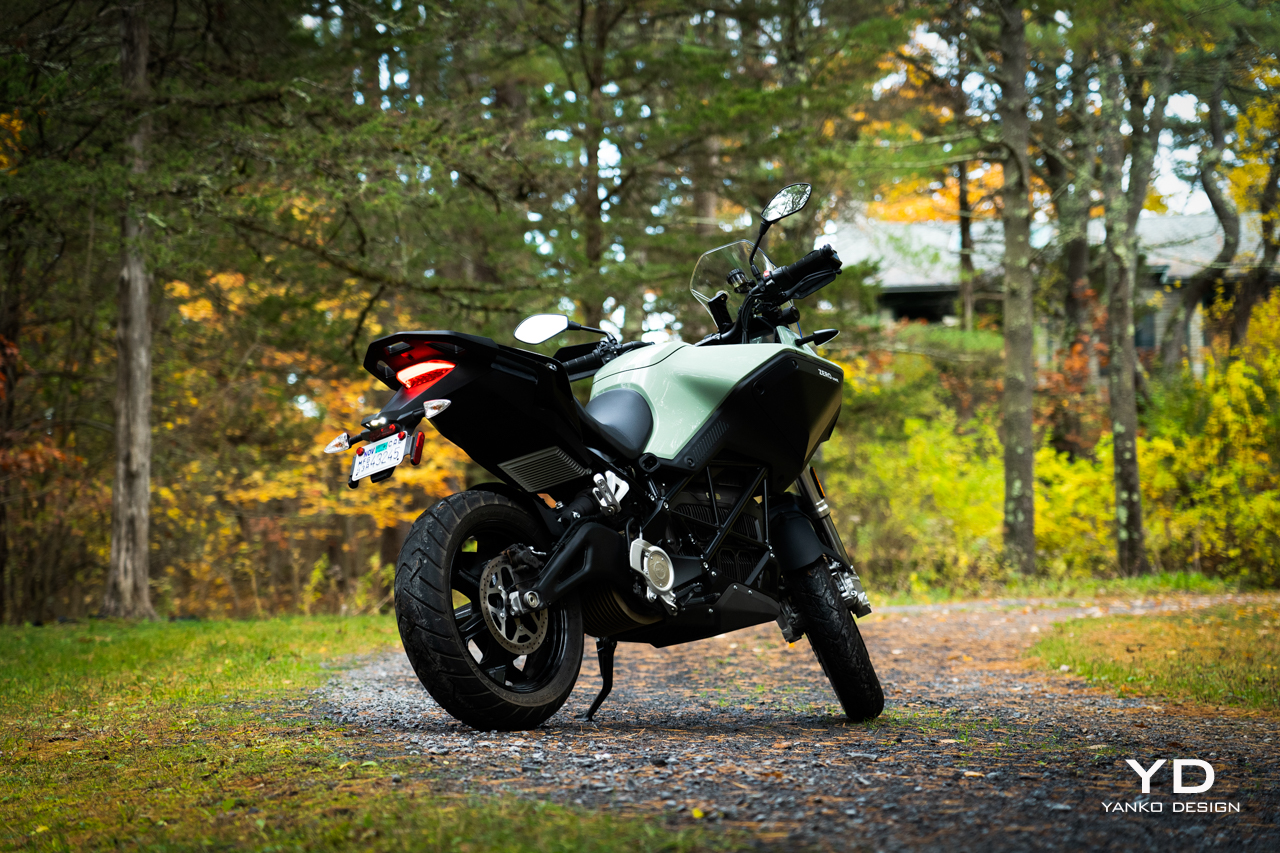
Its face is certainly distinctive, far wider than your average motorcycle’s mug, but that’s due to aerodynamics as much as style.
When it comes to EVs, range is crucial, and the biggest enemy to range is aerodynamics. You might be surprised to learn that a motorcycle, tiny as it is, has significantly more drag than a car, even a big one like an SUV. Why? By and large it’s thanks to us. Human beings aren’t exactly aerodynamic when traveling face-first, and that’s exactly where a motorcycle puts us.
A wide fairing, like that on the DSR/X, helps to bend the wind around the rider rather than hanging them out in it. That means a wide nose with pronounced bulges, plus a tall, clear windscreen designed to duct air up and over.
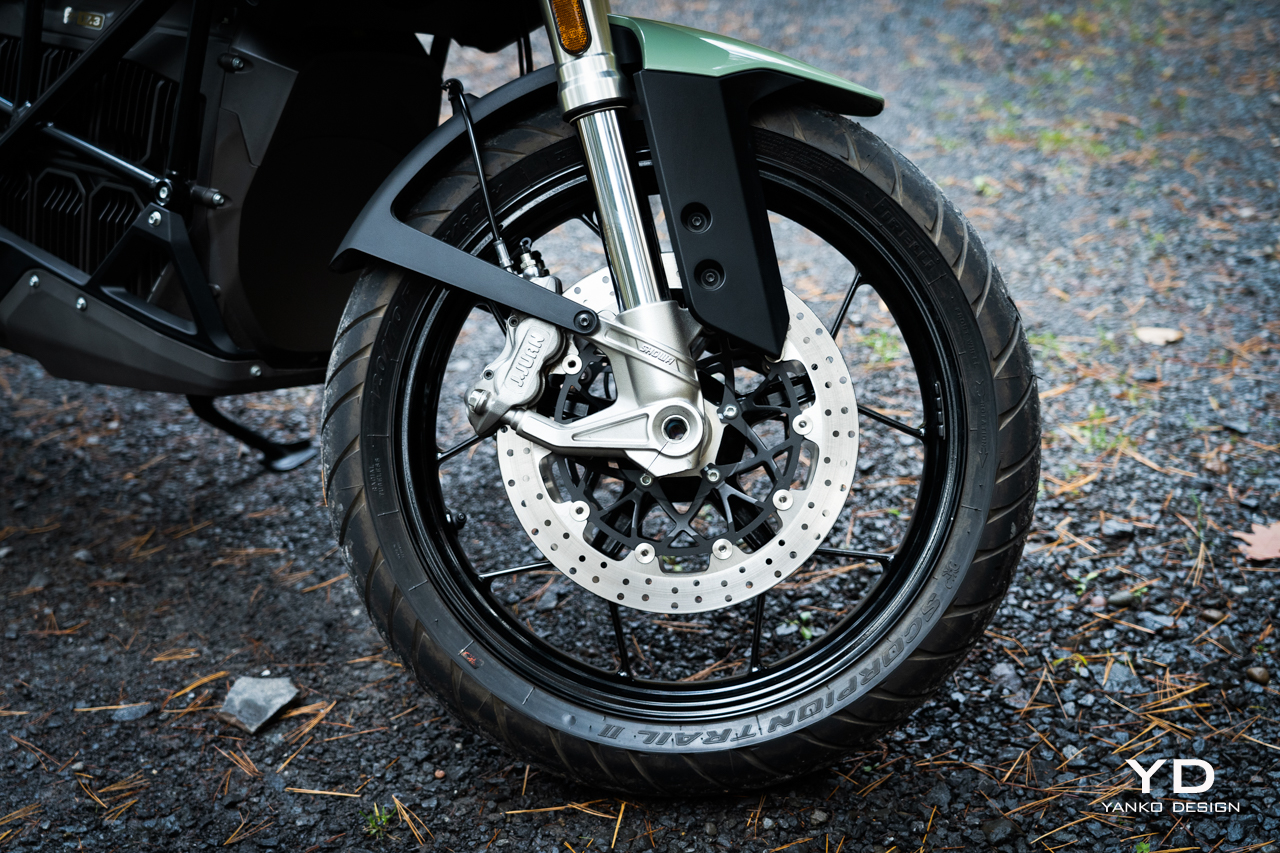
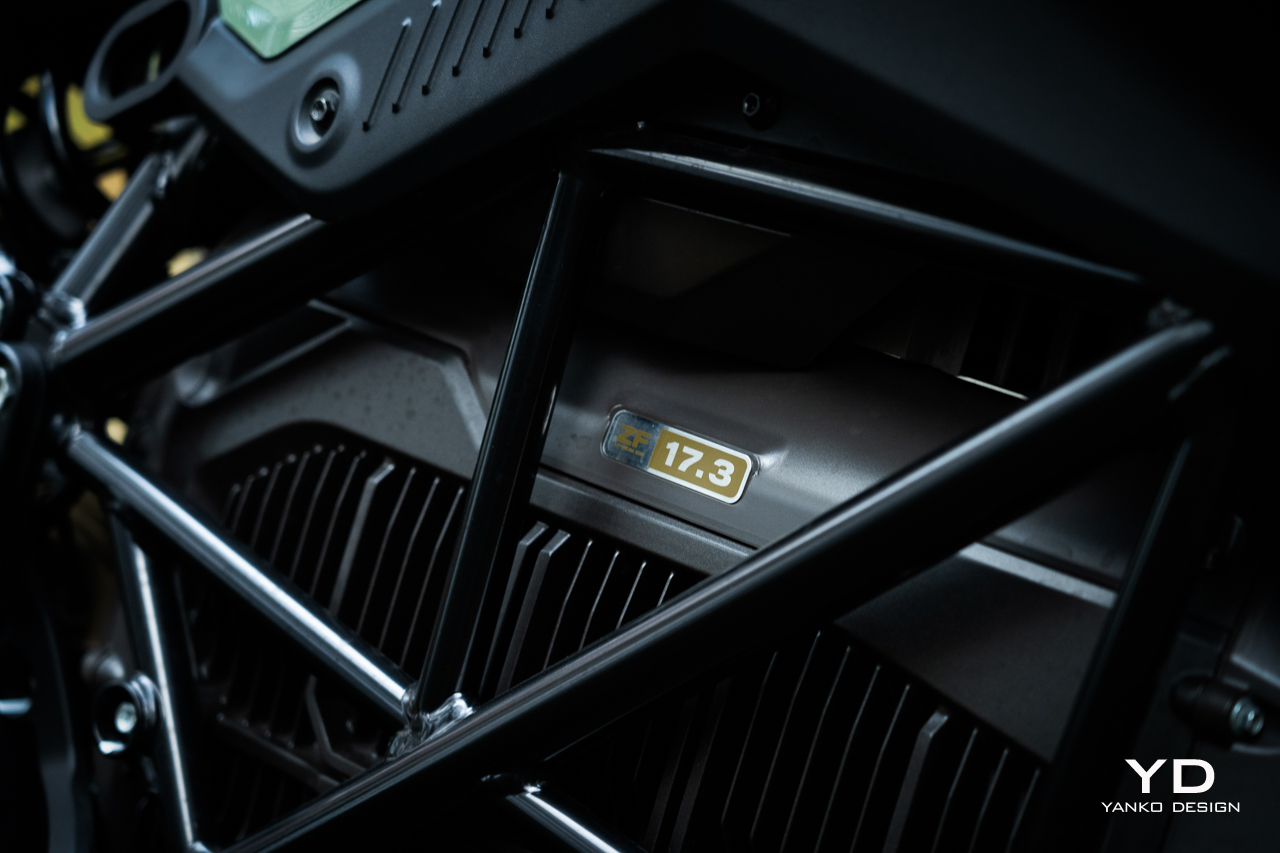
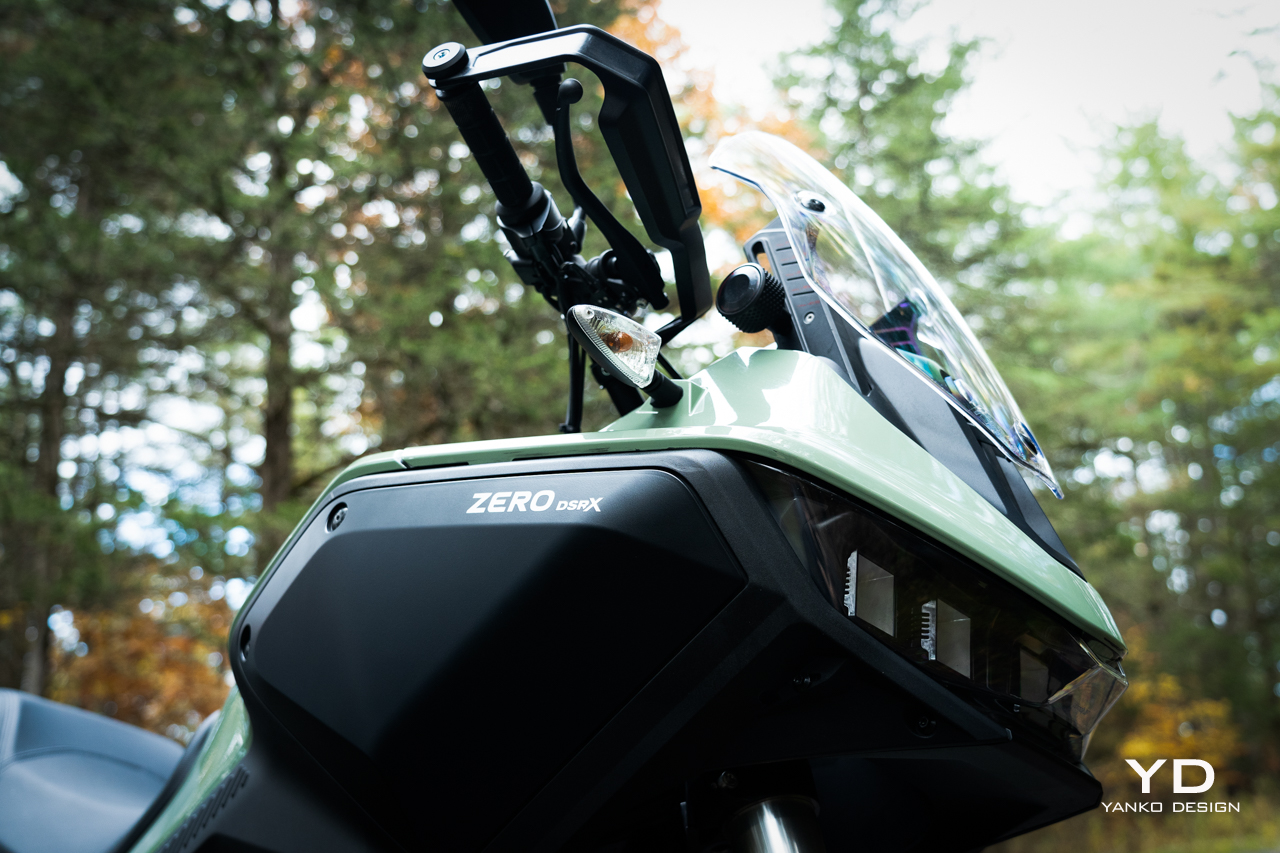
The result is a clean, organic shape that’s a bit simple, maybe a little boring, but effective, especially in the DSR/X’s hero color of green, which Zero calls Sage.
Below the bike’s belt line, though, all thoughts of aerodynamics seem to have gone out the window. Here you get a clear look at the bike’s tubular frame construction, battery pack fully exposed for maximal cooling and slung down low for optimal handling. Behind it, the tiny electric motor is directly inline with the mounting point for the swingarm.
Positioning the motor and battery low has benefits from a handling standpoint, but it also has some benefits for convenience. What you’d normally think of as the tank of a motorcycle is actually a giant storage cubby here, not quite big enough for a helmet (not if your head is as big as mine, anyway), but offering plenty of volume for gloves, a rain suit, and even a nice picnic lunch.
That cubby locks with the ignition key. Just above that you’ll find the J1772 charge port, then the handlebars.
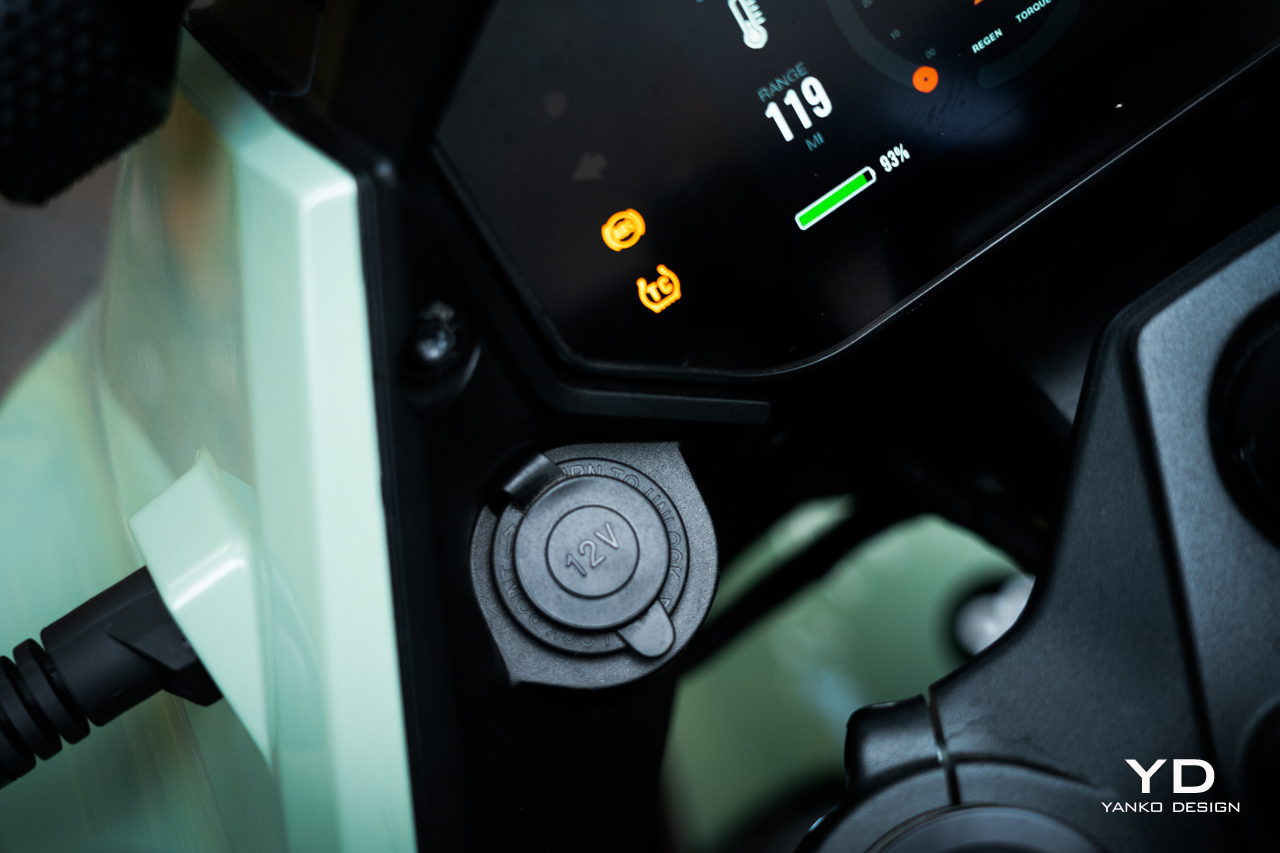
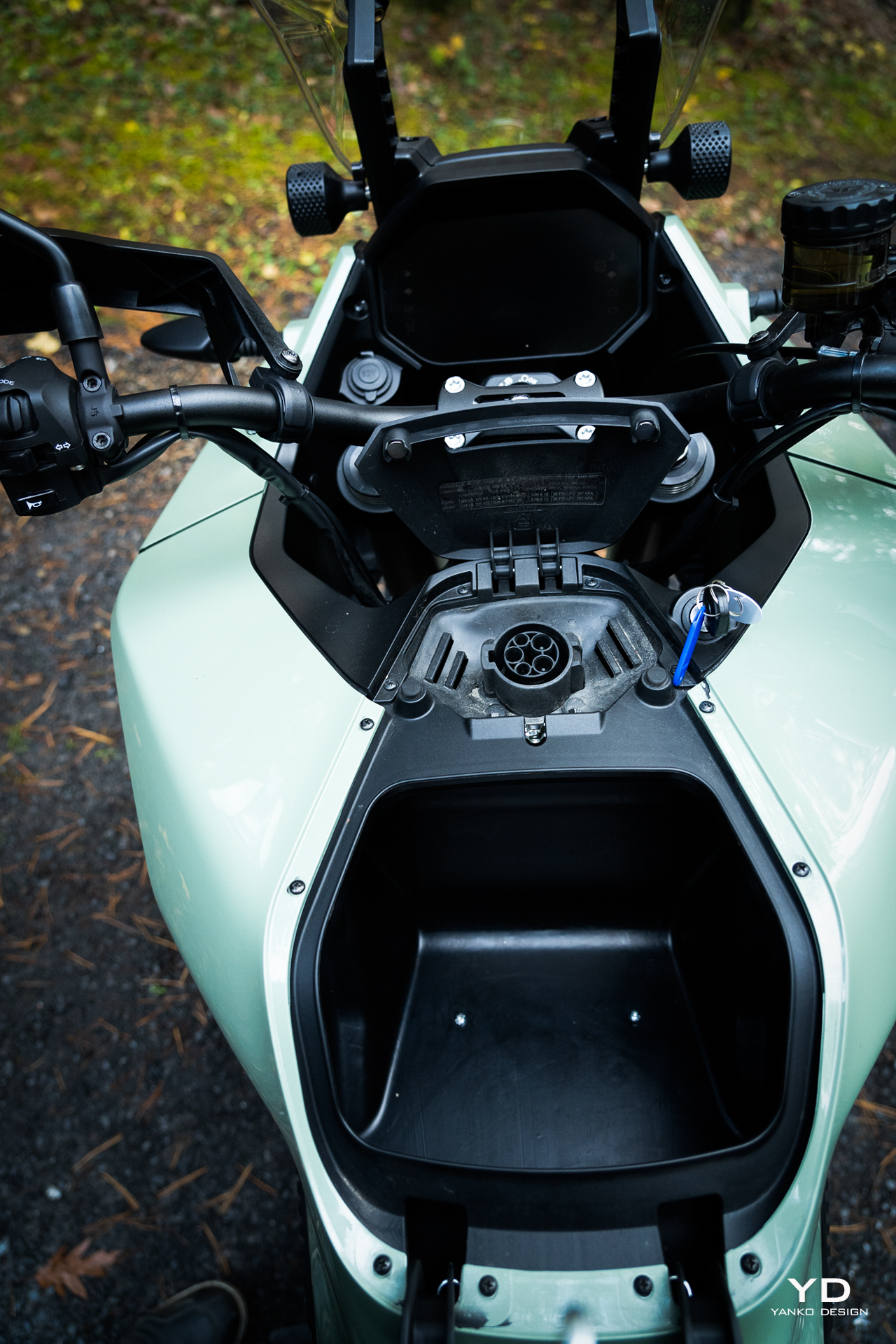
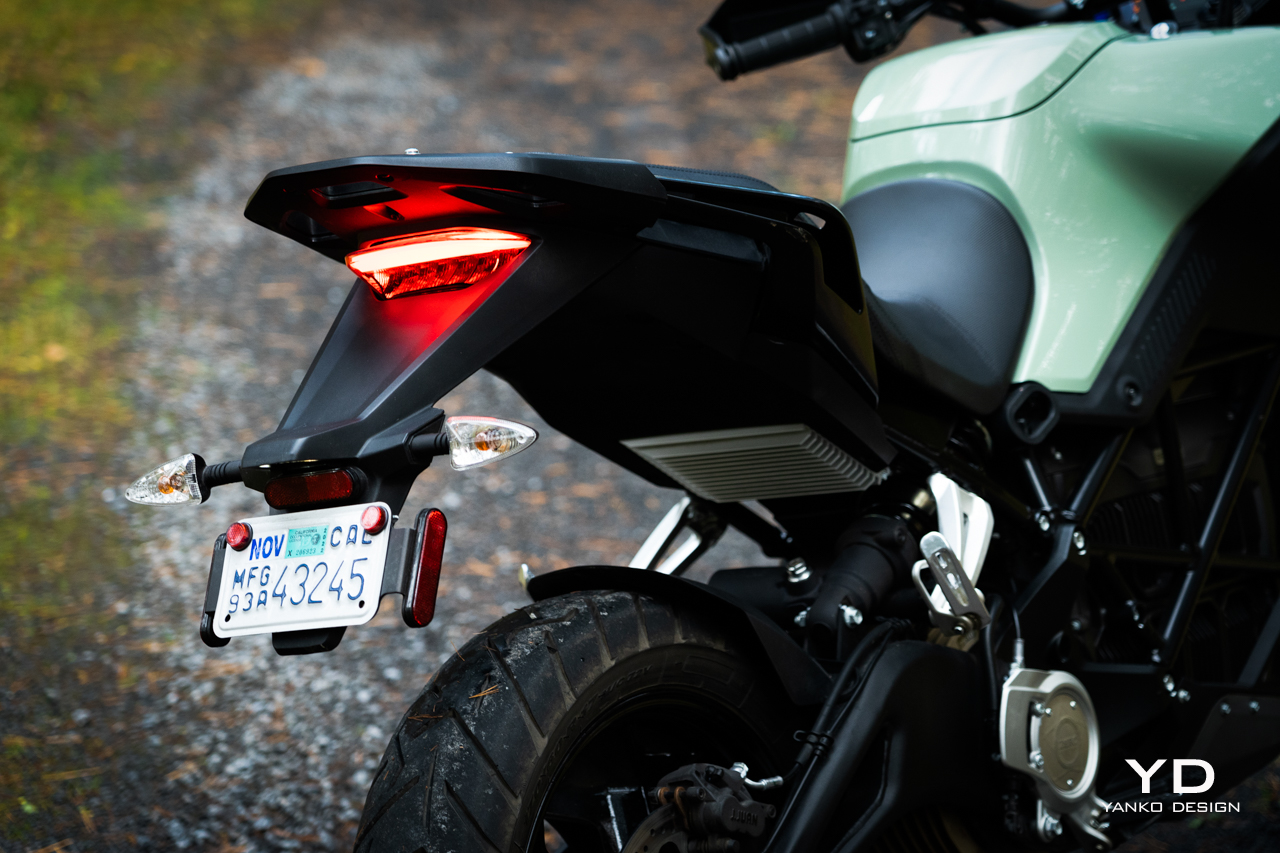
Those bars are perched up high on risers, giving you an upright posture when seated. Controls are traditional and good quality, with the only odd addition being a sort of horizontal jog dial next to your left thumb. It’s with this that you toggle through drive modes and settings on the bike’s bright, five-inch LCD that’s easily viewed even on sunny days. More on that in a moment.
Above the LCD is that windscreen, which can be raised a few inches thanks to a set of chunky twist knobs, one on either side. It lacks the power elevation of some luxury touring bikes, but it’s so easy to adjust with one hand that you’ll never miss it.
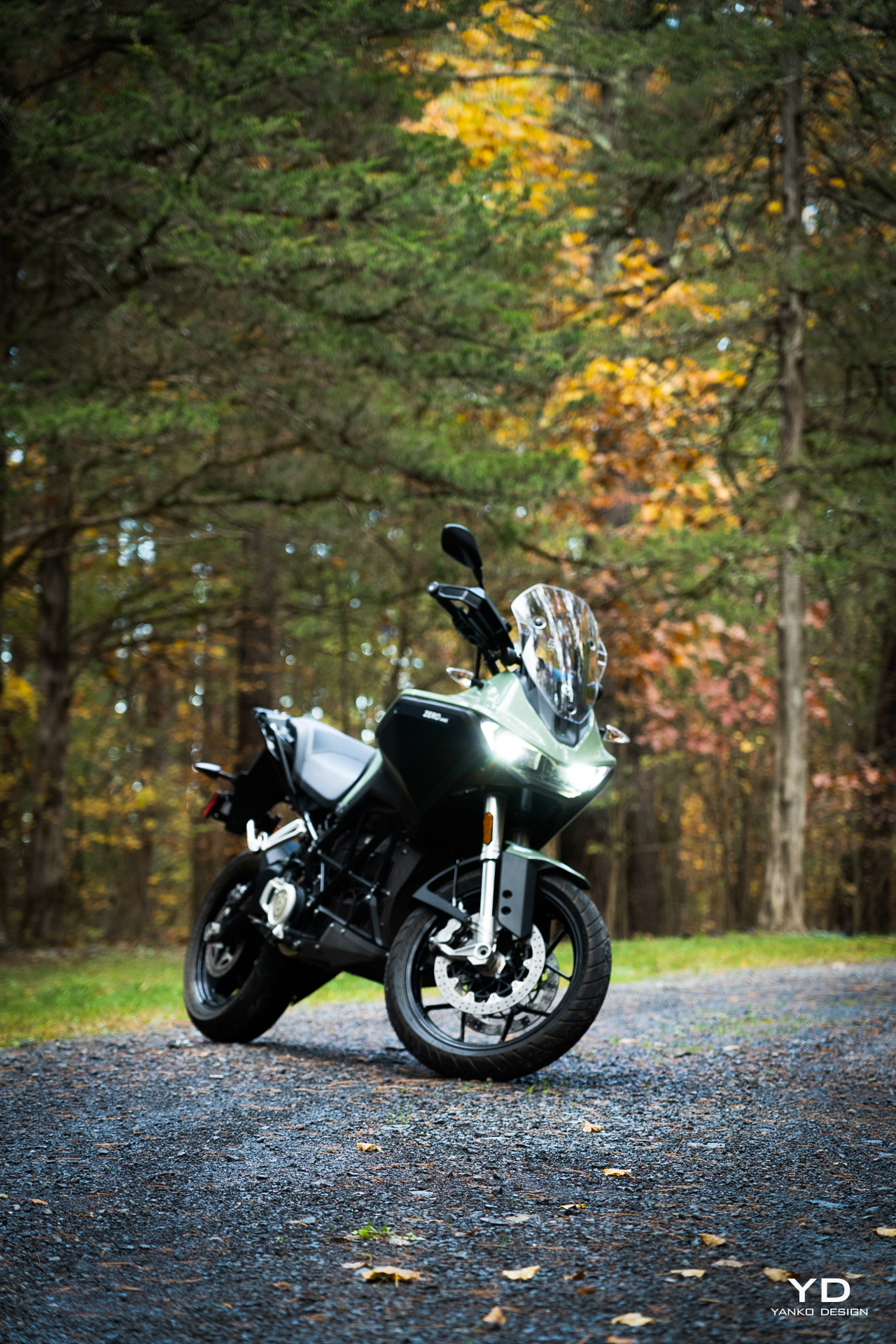
On the road
The DSR/X is a bit on the tall side, seat height at 32.6 inches, which is just ever so slightly higher than my inseam. That means a bit of a flex to swing my leg up and over the wide seat, but it’s not a strain like climbing on to some other dual sport bikes(An optional low saddle drops seat height by 0.9 inches, while a tall one brings it up 1.5.)
That wide saddle is just soft enough to be comfortable, still firm enough to satisfy your typical adventure rider. The pegs situated far enough below that my knees are at a comfortable extension. In keeping with this bike’s DS aspirations, those pegs are more aggressive than your average motorcycle, wide and open to allow for mud and muck to fall through but with sharp serrations to grab the soles of your boots through it all.
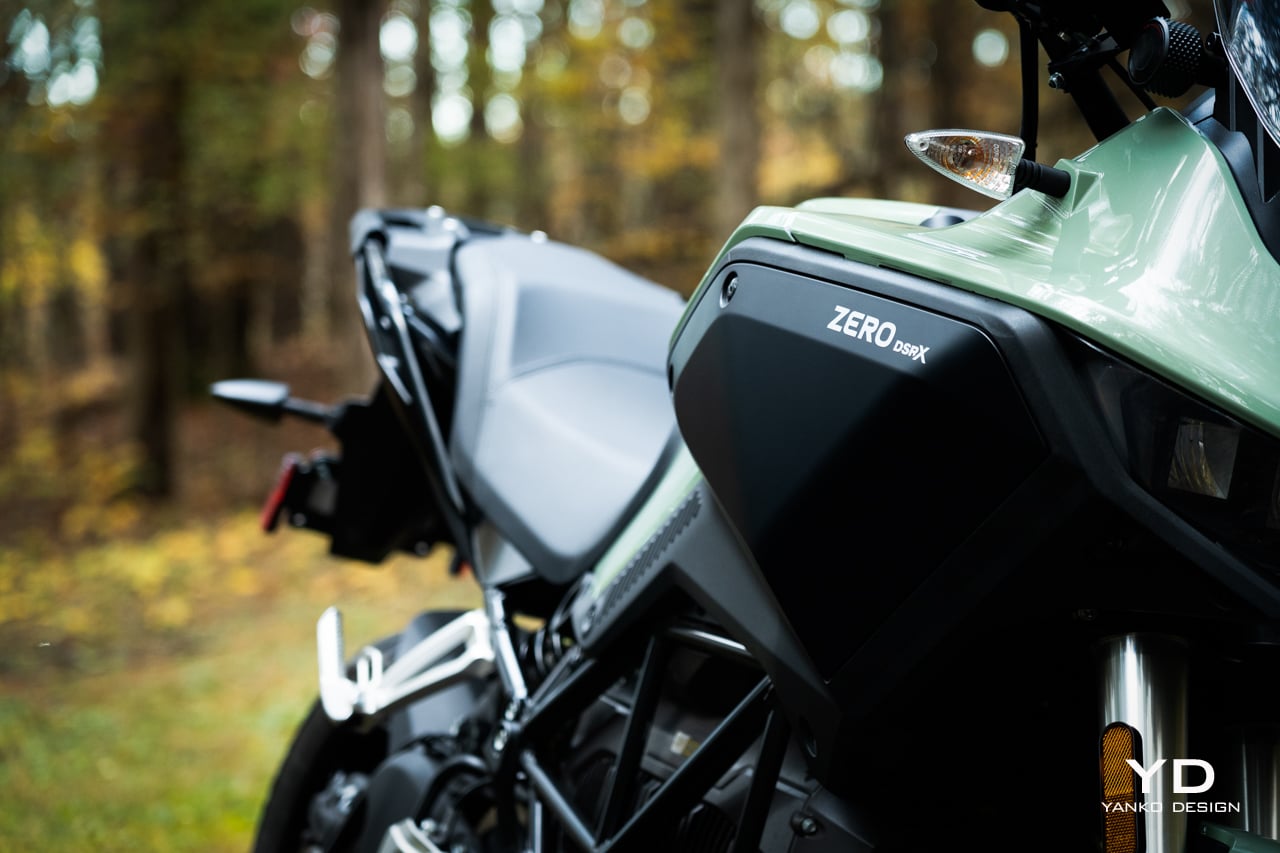
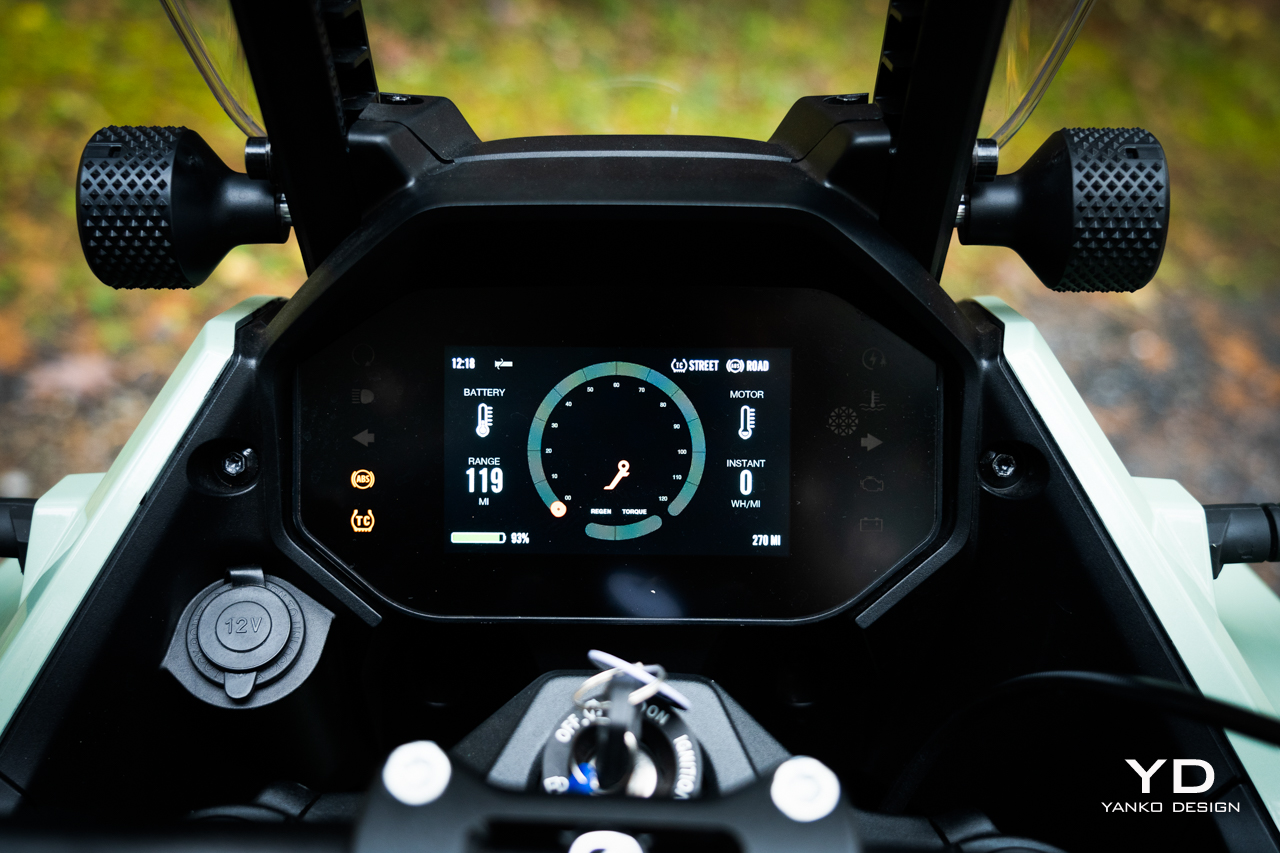
Those, plus the tall bars, make standing up on the DSR/X a breeze. Getting up and out of the saddle is a common thing for dual-sport riders. When you’re off-road, standing up further lowers the bike’s center of gravity, boosting stability on loose terrain. It also gives you a better look at the trail ahead and, if you’re getting a little warm, lets you air things out a bit, too.
Over that kind of rough terrain, scrabbling up over rocks and dirt, the DSR/X is a delight. It’s a heavy bike, 544 pounds, but it feels incredibly easy to manage. That low center of gravity imparts stability but, more so, the power delivery is perfectly tuned for loose conditions.
The DSR/X has 100 horsepower and 166 pound-feet of torque from its electric motor. That power figure isn’t world-conquering, but the torque number is impressive. Most impressive, though, is how smooth and easy it is to deploy that power. This is a bike just as stable when inching over gravel as it is flying down the interstate.
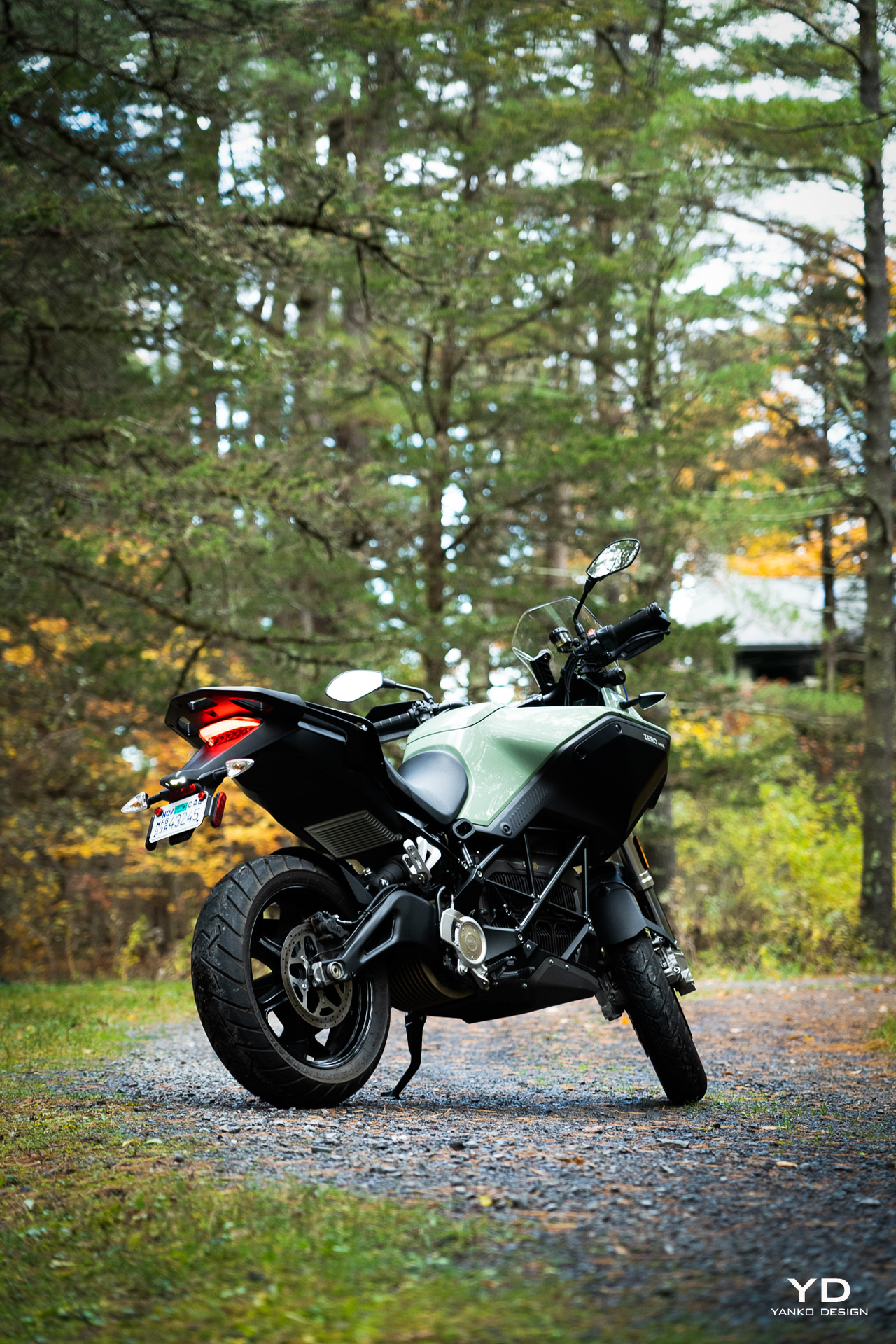
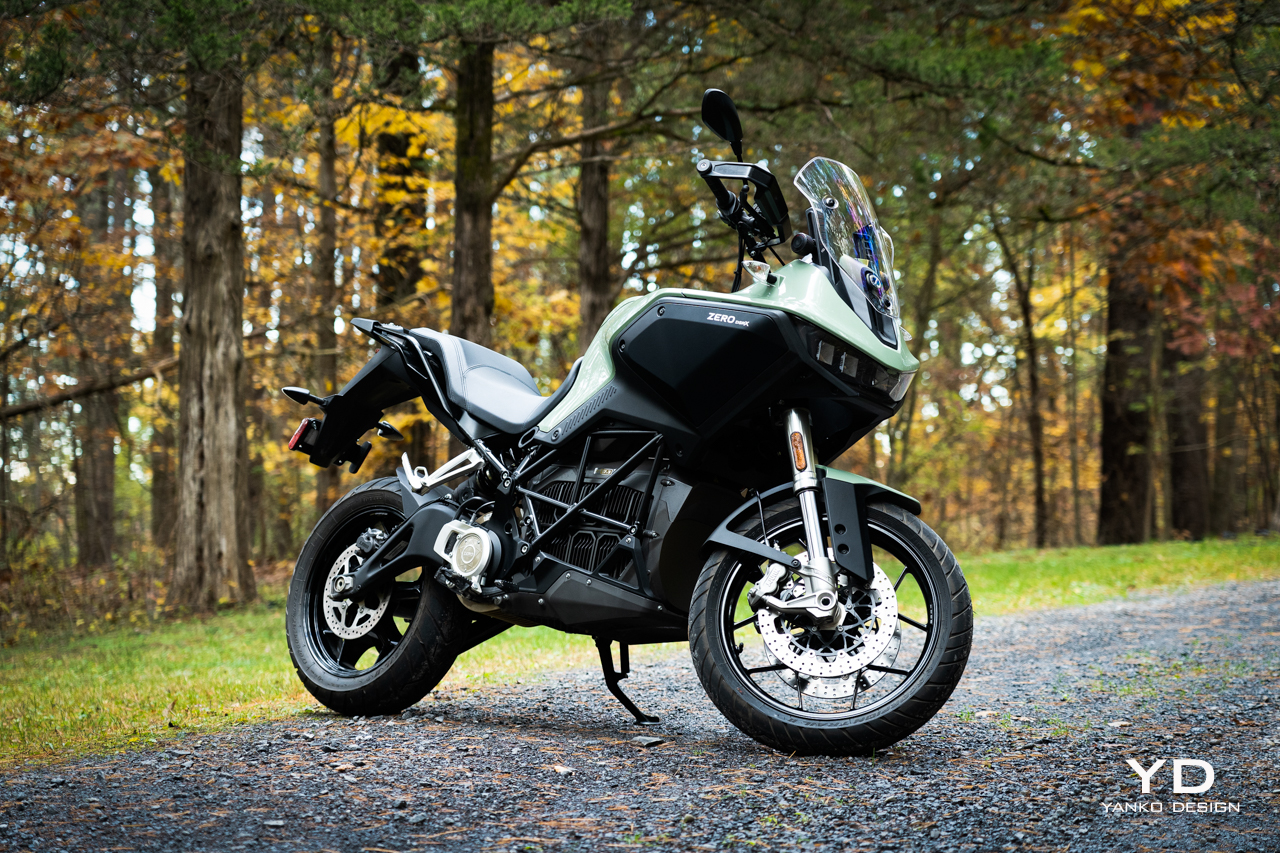
Helping that is a series of five on-road drive modes and five more for off-road, settings designed to ensure that the rear wheel keeps turning exactly as you want it to, regardless of conditions. Likewise, ABS is standard to ensure neither wheel locks under braking.
If that’s not enough, you can customize your own riding modes and, yes, you can turn off all the safety systems if you really want to let it rip.
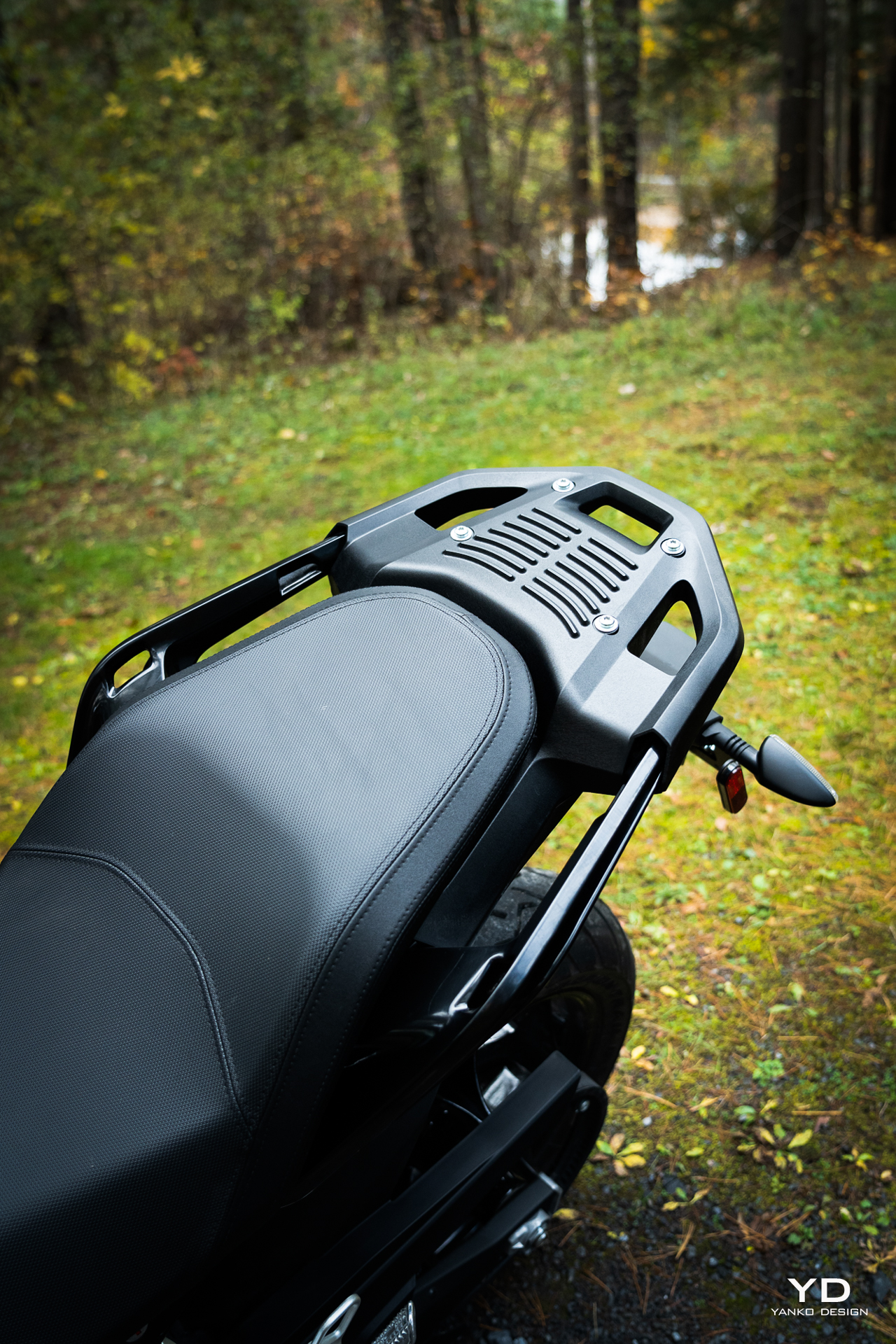
My favorite ride mode by far is called Canyon. This gives the bike maximum power but also maximum regen, which more or less gives a motorcycle equivalent of one-pedal EV driving. Here, though, it just means I don’t need to reach for the brake, letting me carve through twisty roads at speed, adding throttle when I need more speed, releasing when I want to slow down.
The silence, the torque, and the surprisingly nimble character of this big bike make spirited riding like that a real joy.
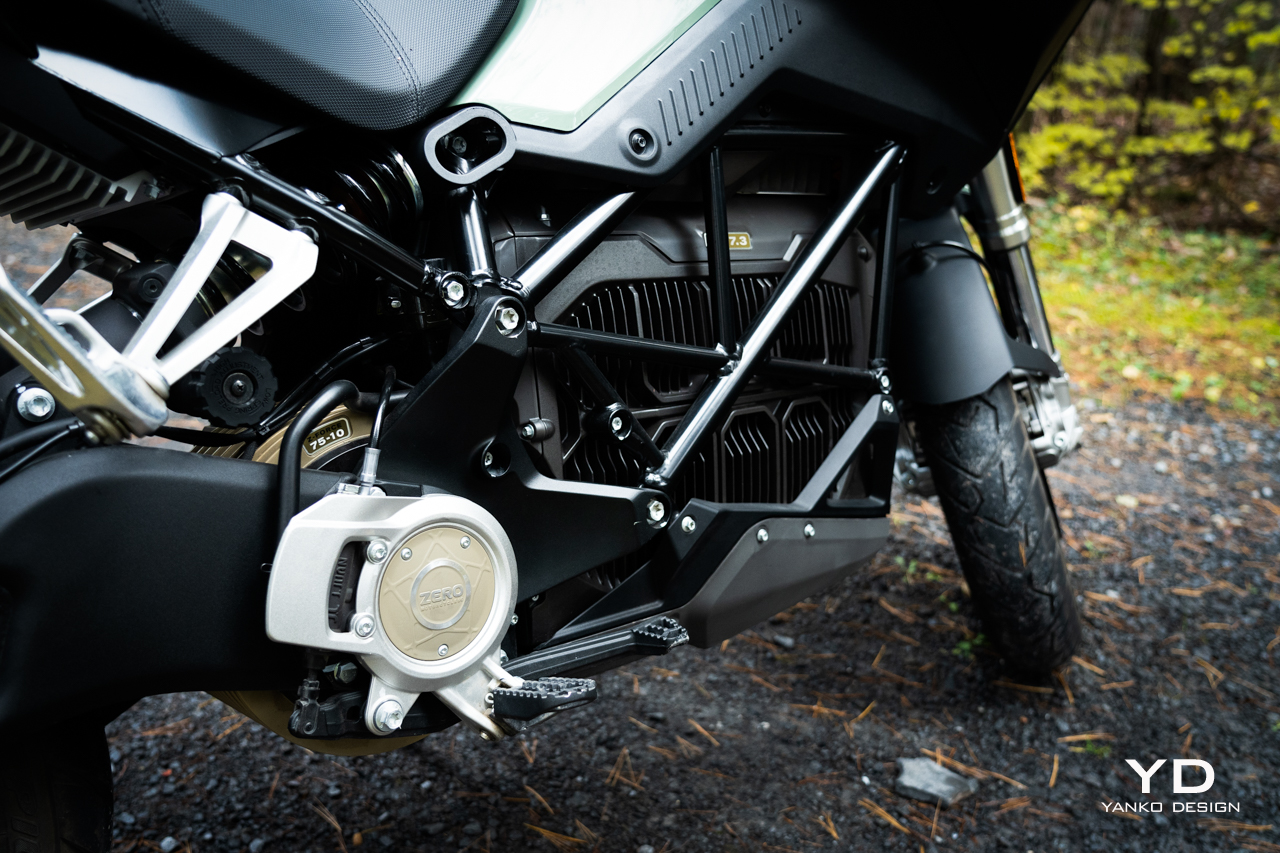
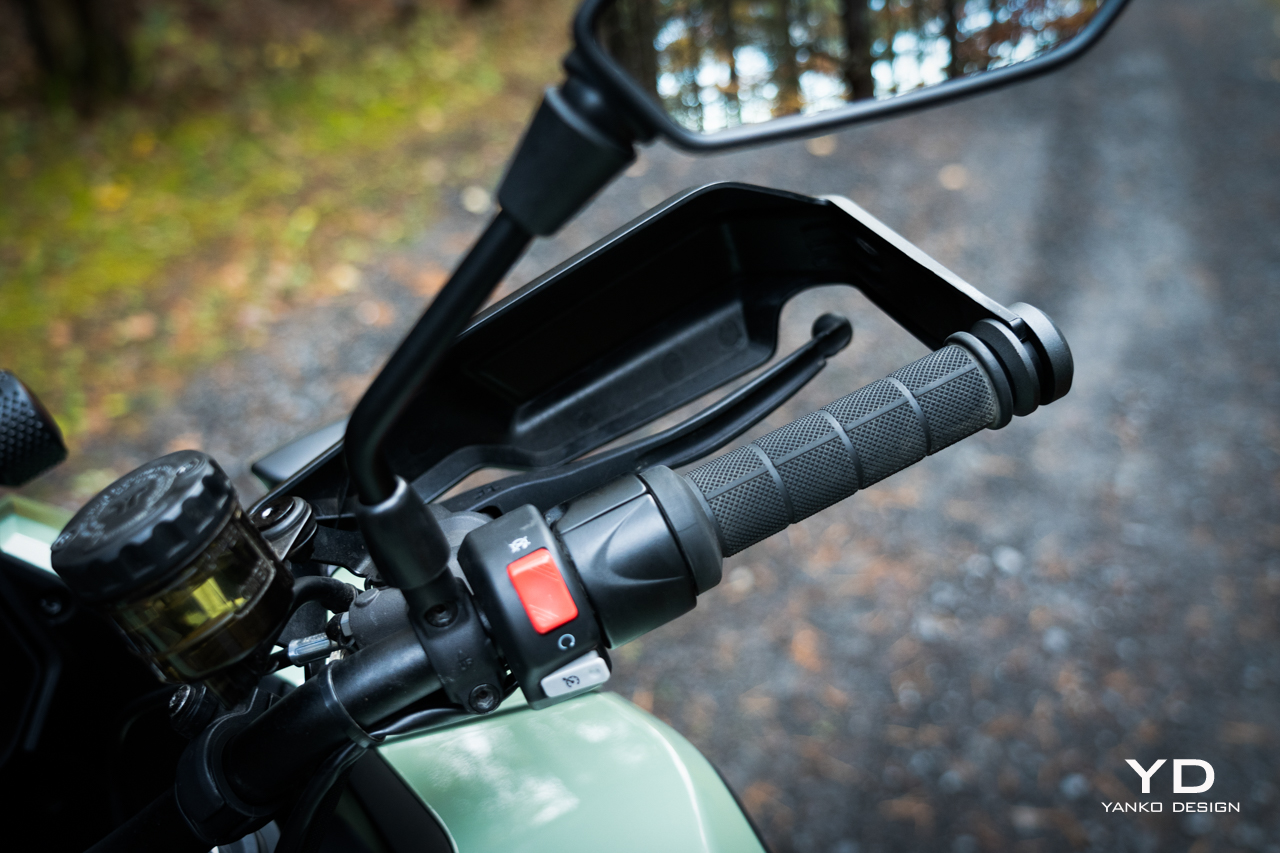
The Showa suspension too has a good amount of compliance for off-road use without feeling too soft on the road, though it’s easy enough to dial in exactly how you want it, adjustable for preload, compression, and rebound front and rear.
If there’s a catch, though, it’s that riding in a spirited fashion will end the fun quickly. Officially, the DSR/X is rated for 180 miles in the city, but you’d have to use the bike in a very conservative way to get that far. Range drops to just 85 miles on the highway going 70 mph.
As I mentioned above, aerodynamics are not your friend. Likewise, you can’t tap into all that torque, meaning you’ll want to use the bike’s Eco mode.
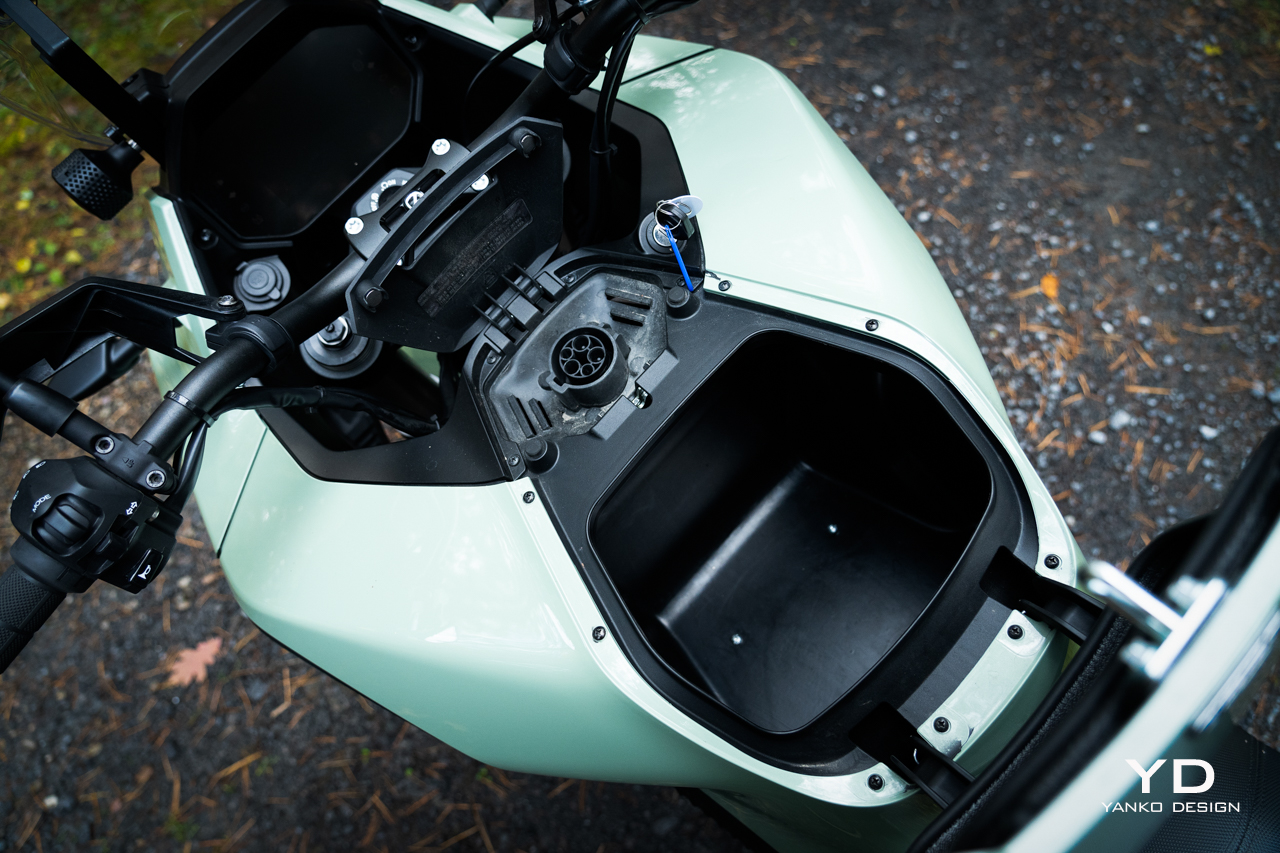
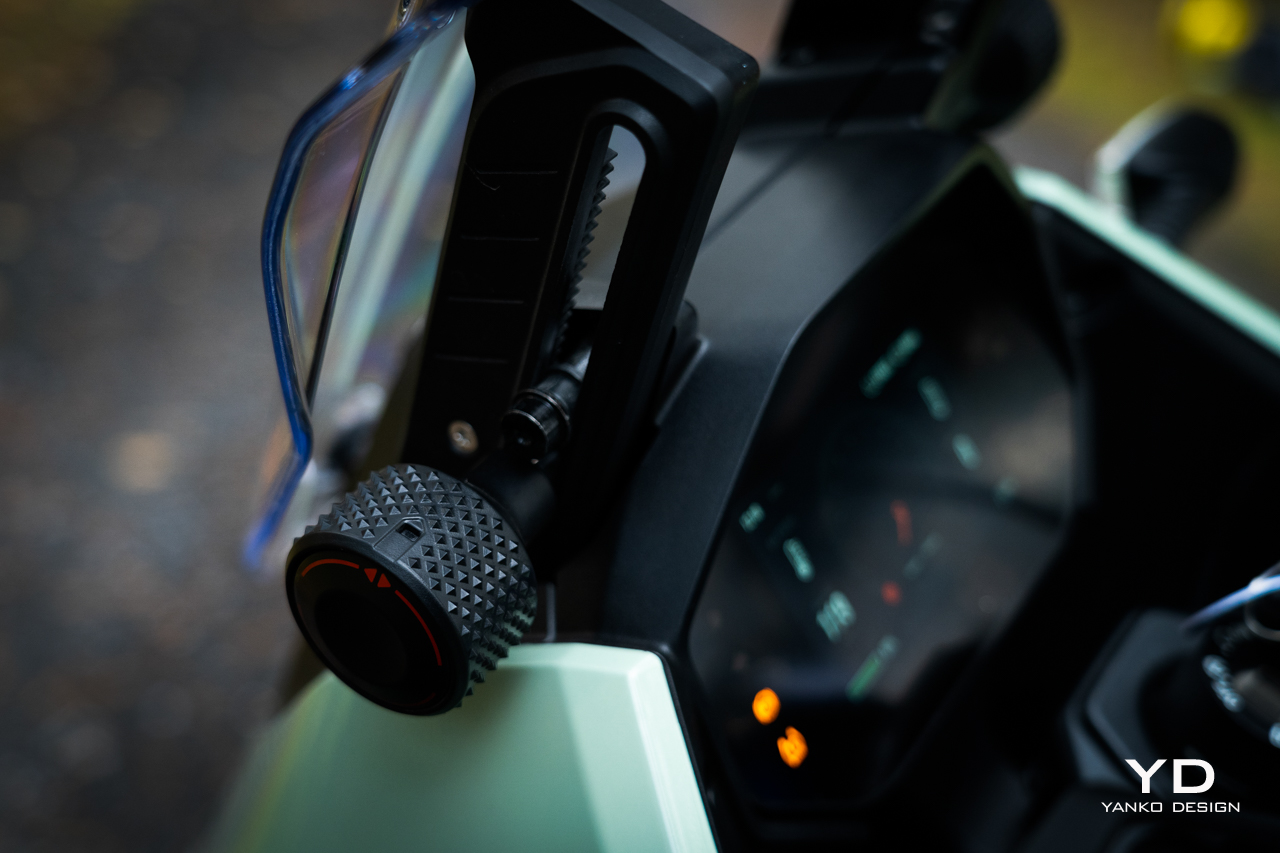
Ridden in this way I still struggled to get close to the bike’s maximum rated range. In my average, more spirited riding, I’m seeing estimates closer to 120 miles.
That’s a bit of a shame as a bike this fun and this comfortable would be ideal for longer rides. Thankfully, charging is a possibility if you don’t mind some longer pit stops. It’ll take 2.7 hours to fill the 17.3 kWh battery pack from empty, but dropping down to two hours for a 95-percent charge. And that’s on a level two charger. Even on a typical wall outlet, the DSR/X charges overnight.
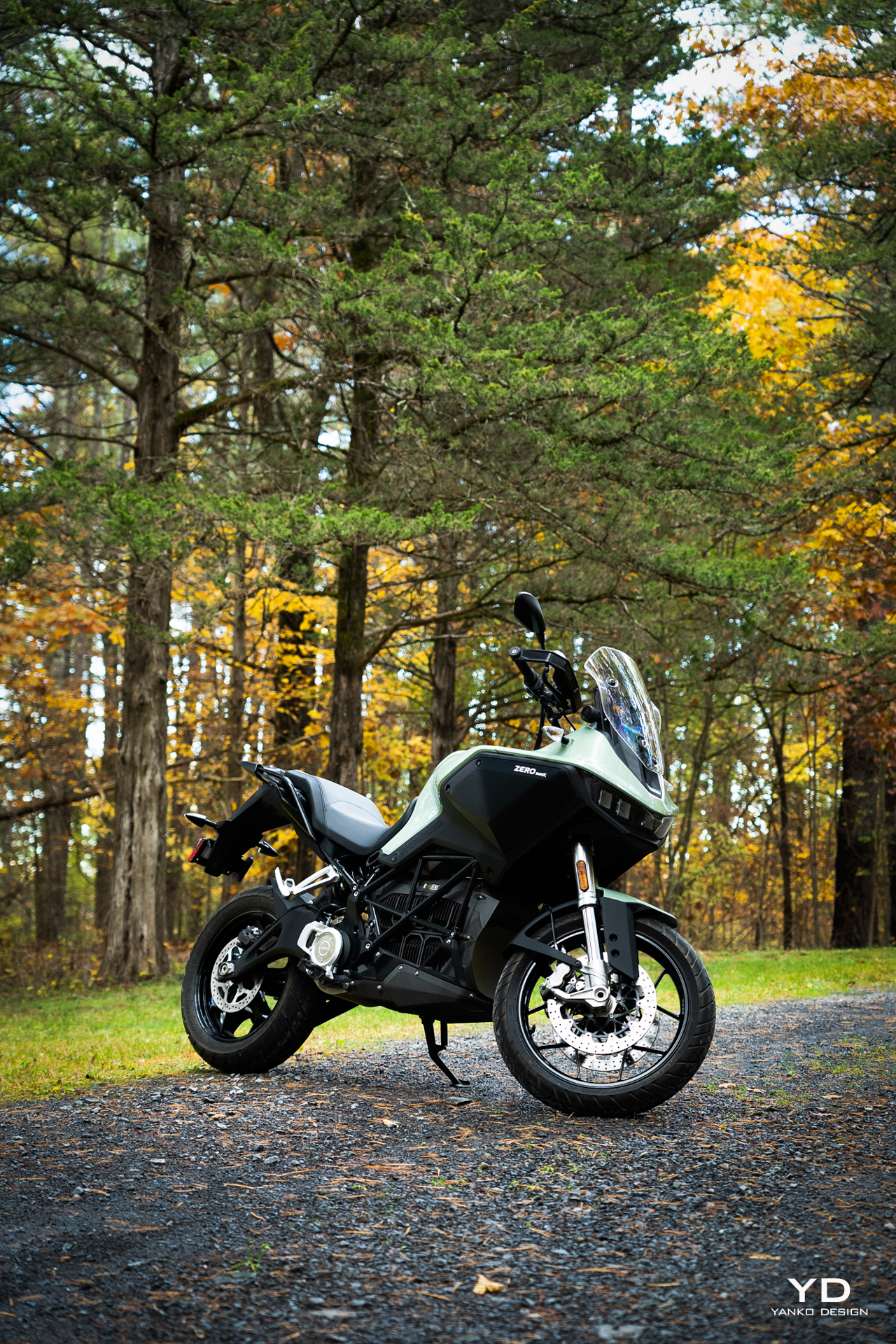
Pricing and Options
The base DSR/X starts at $24,495 and that’s really all you need. In fact, that’s exactly how the bike you see here is configured. But, if you want a little more range, you can drop an additional $3,200 for the Power Tank, which slots a few extra cells in that storage compartment in the tank. That should boost the bike’s longevity by about 30%.
Another option is the $3,000 6 kW Rapid Charger, which also slots into the tank — meaning you can’t have that and the bigger battery pack. Go for this and charge times drop by half, meaning just 60 minutes for a 95% charge on a level 2 charger.
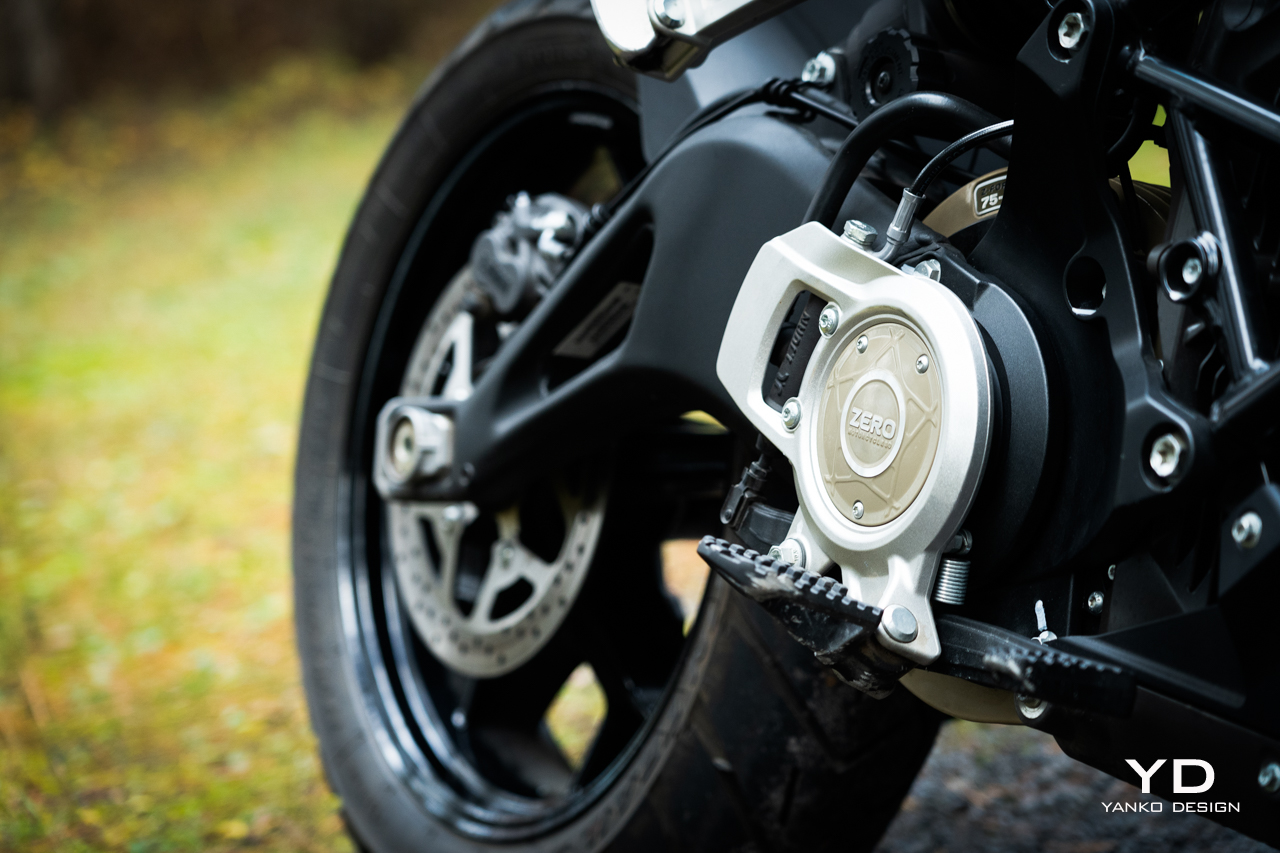
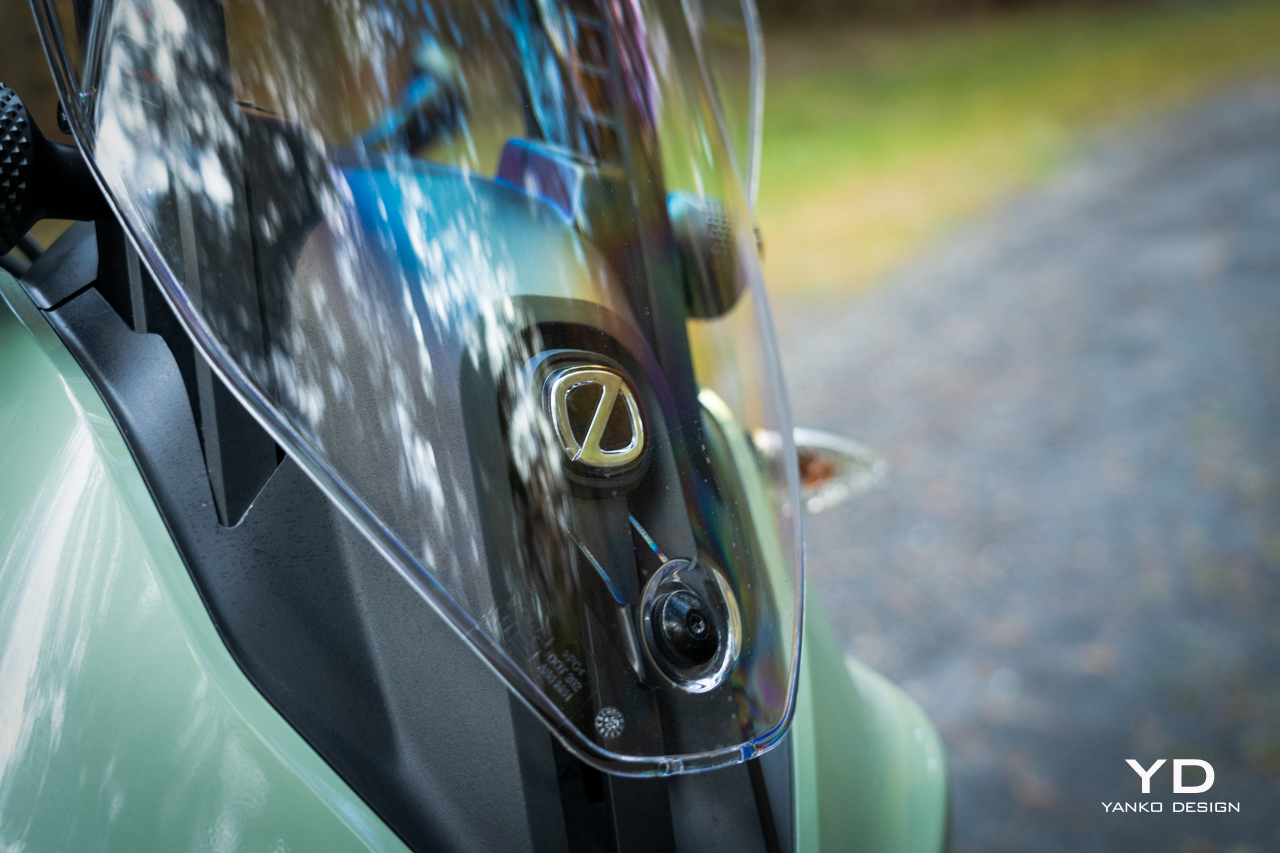
Other accessories are more for style and, indeed, lifestyle, including things like storage bags and phone mounts.
We’ll actually be spending a full year with this DSR/X and I’ll report back with more detailed range testing as the weather improves and the riding season gets swinging in earnest. Regardless, Zero’s latest bike is a real joy, fun and nimble on the road, stable and easy to ride off.
If you’re looking for a place to dive into the wonderful, peaceful, maintenance-free world of electric motorcycles, this is it.
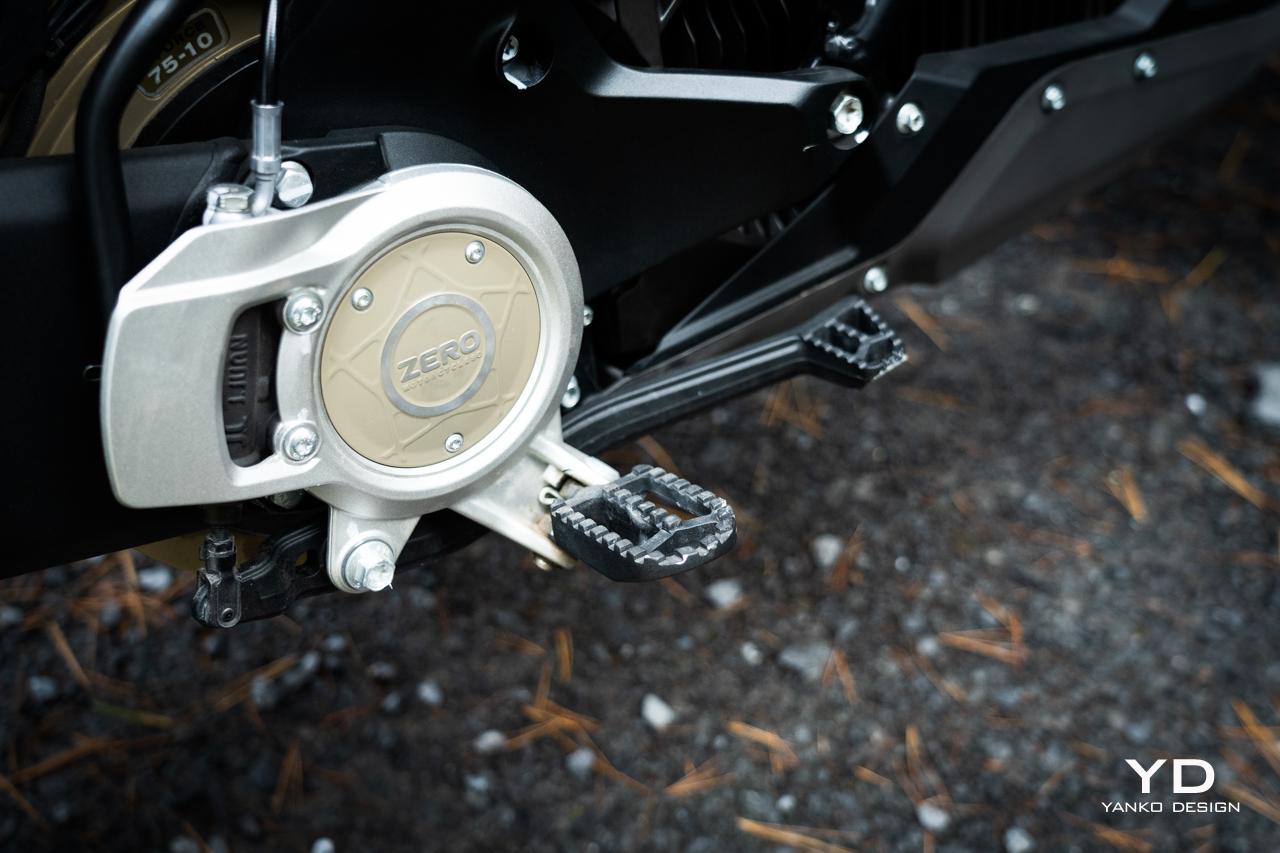
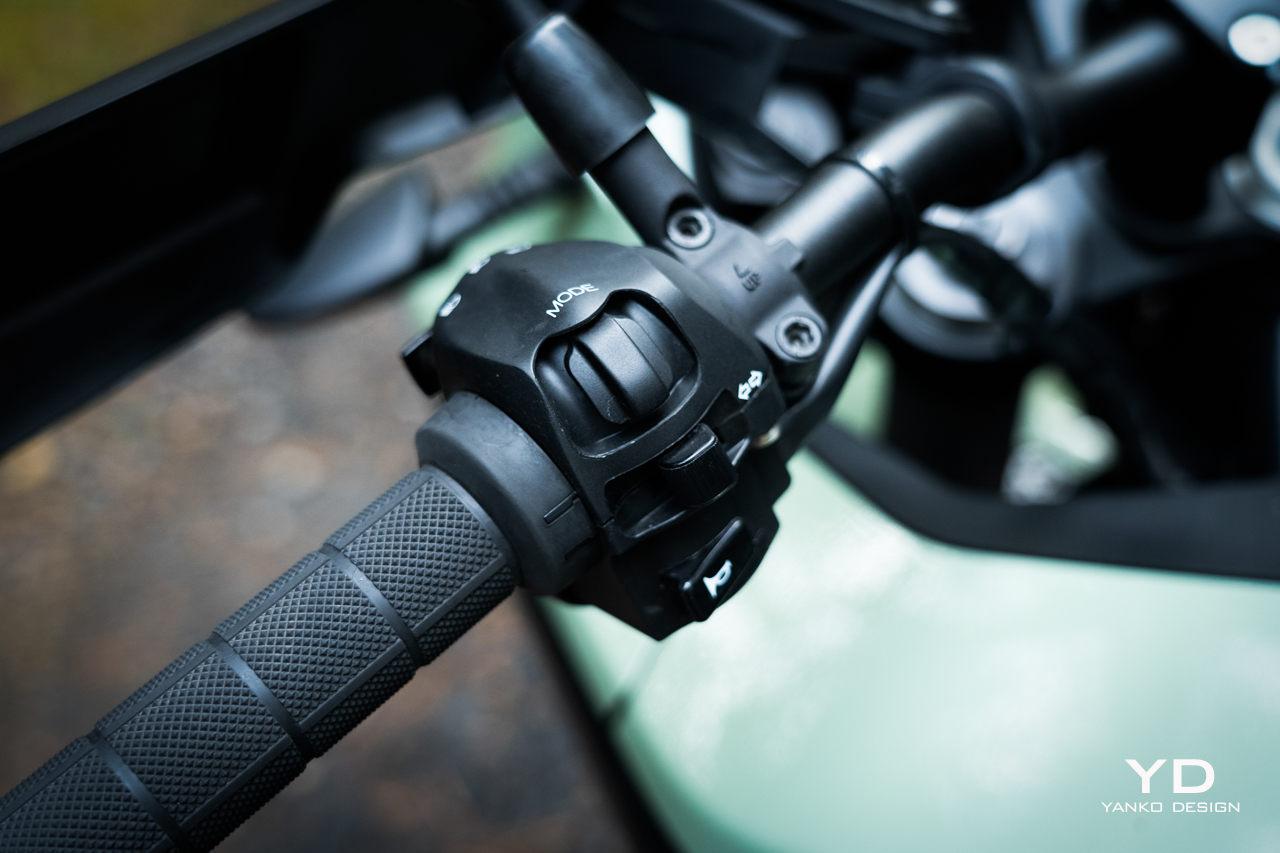
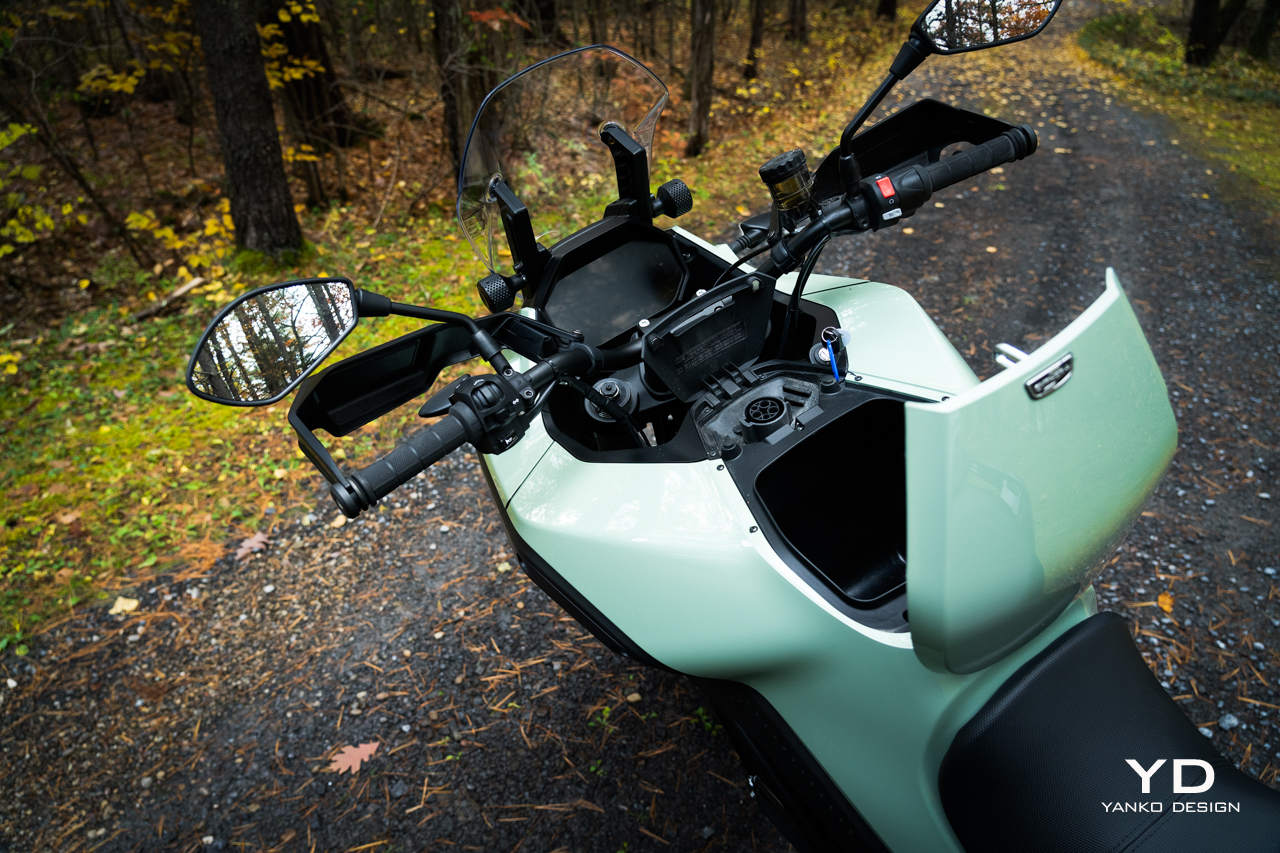
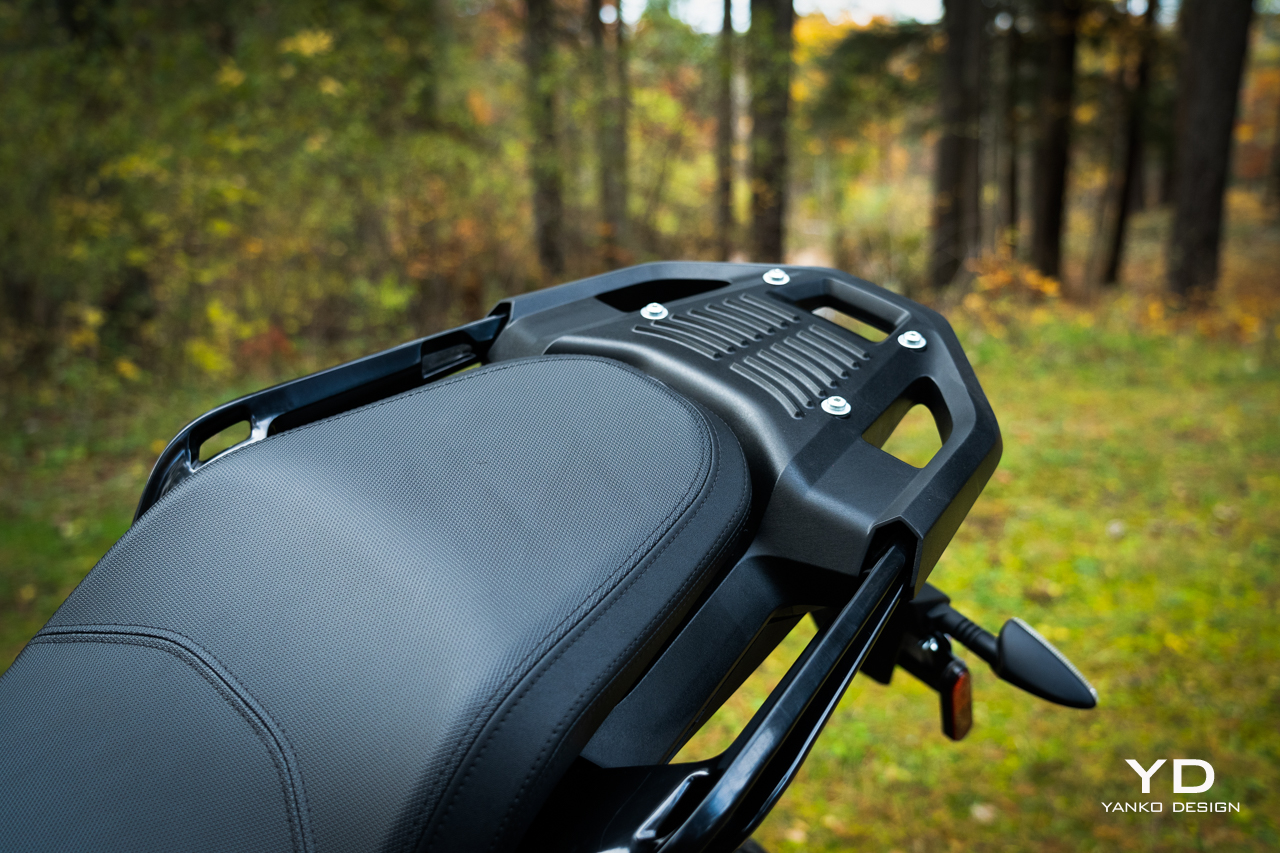
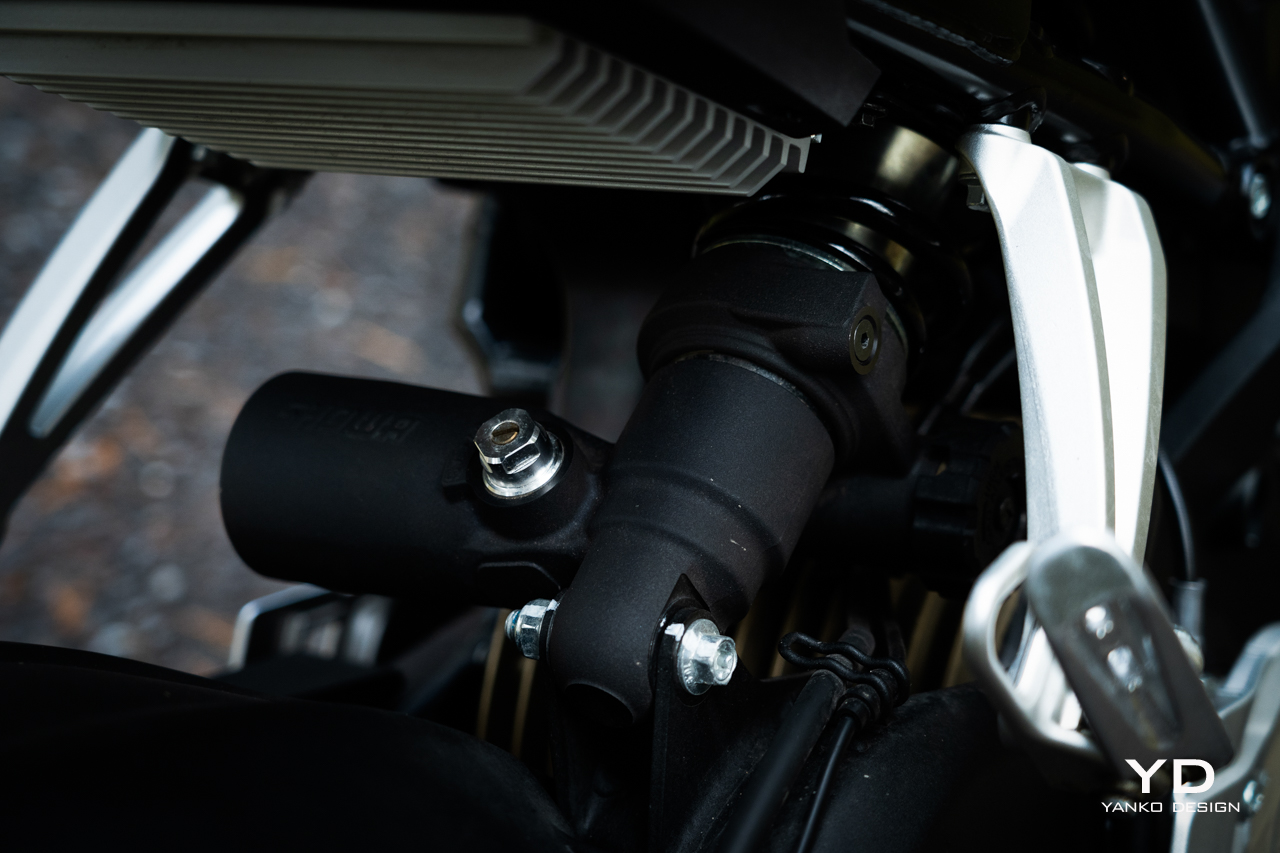
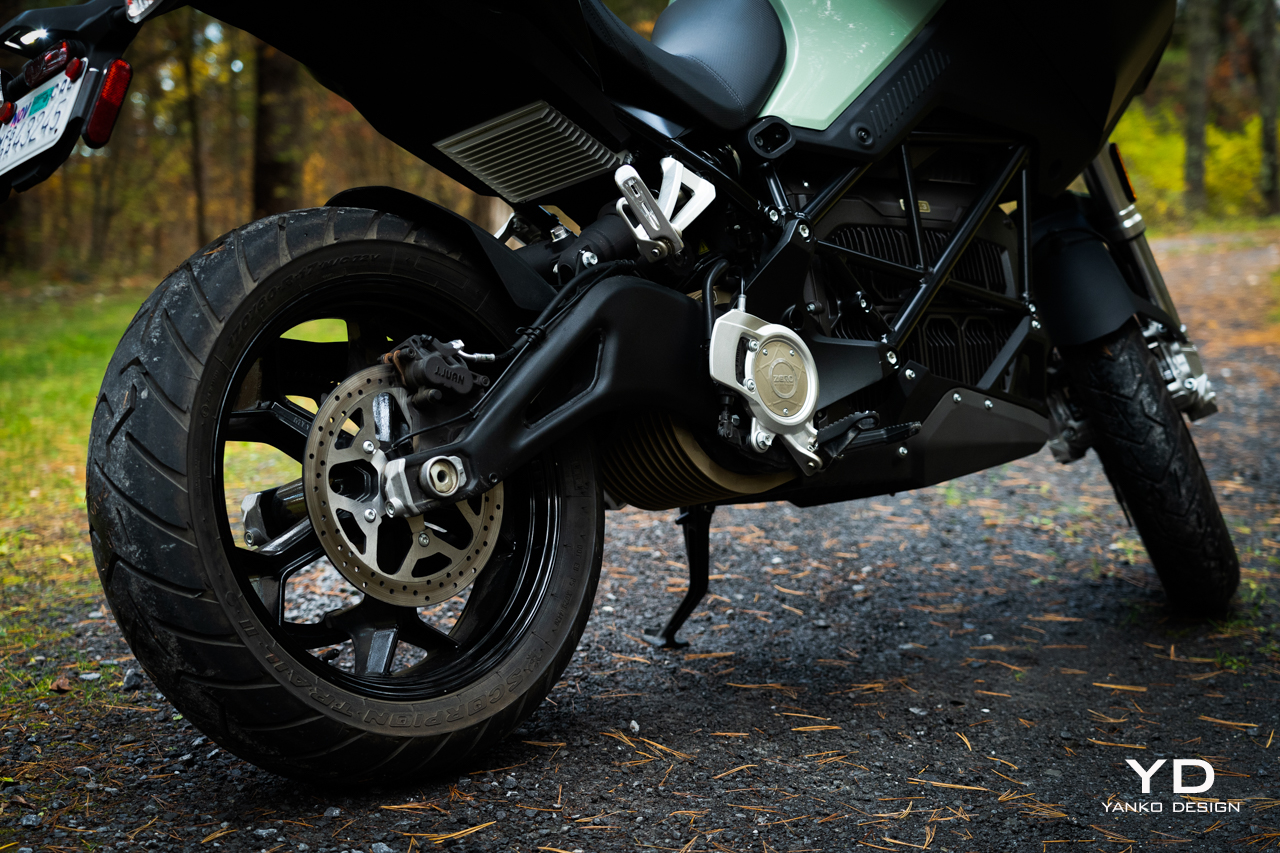
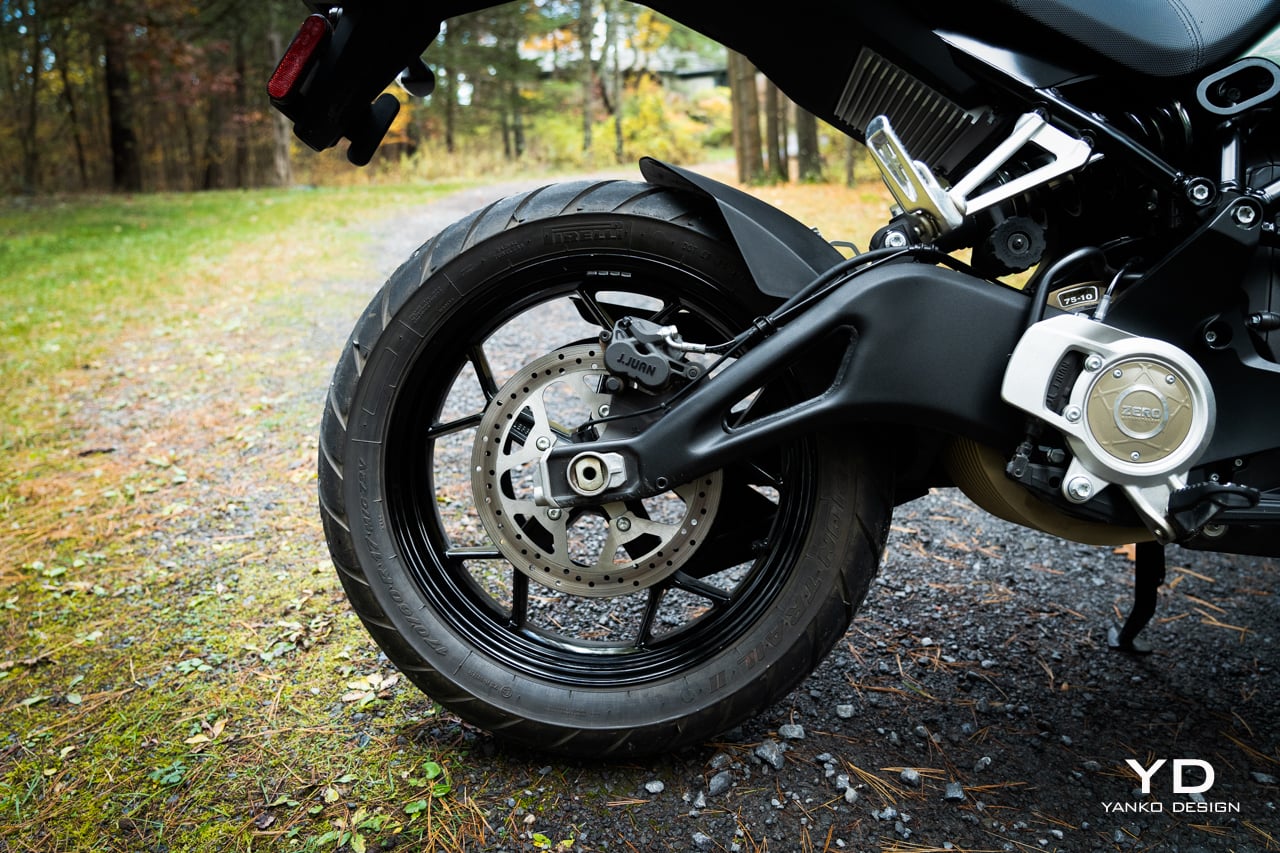
The post 2023 Zero DSR/X Review first appeared on Yanko Design.
0 Commentaires